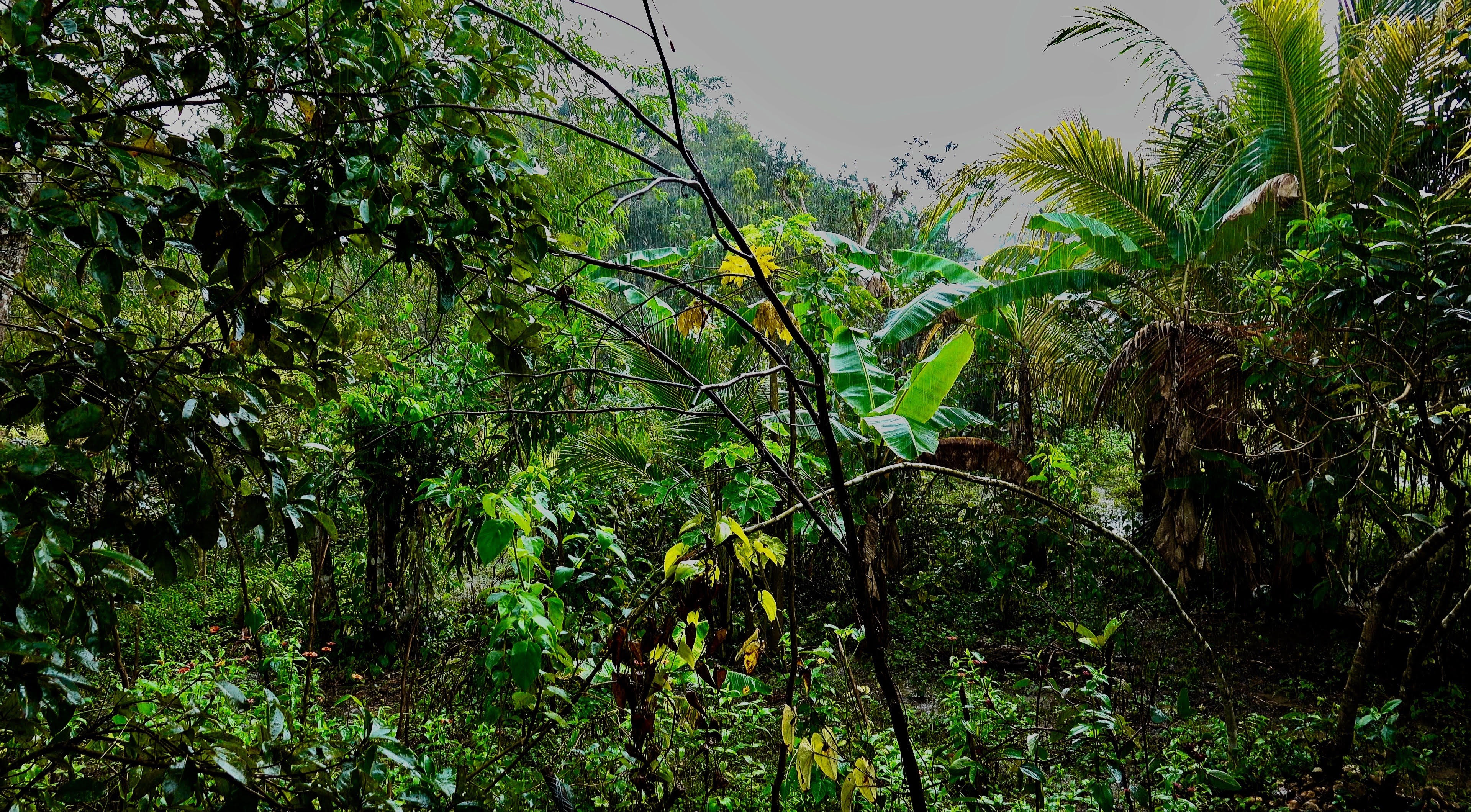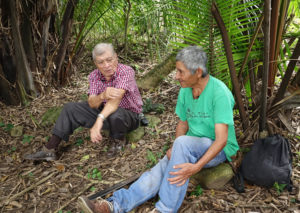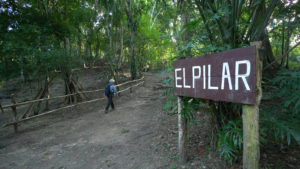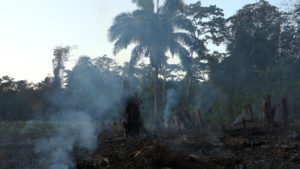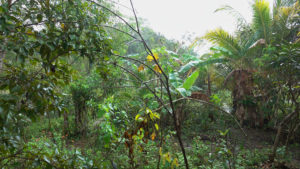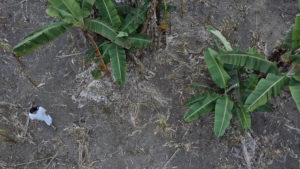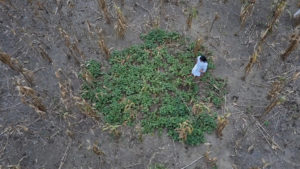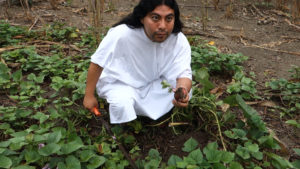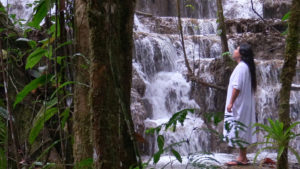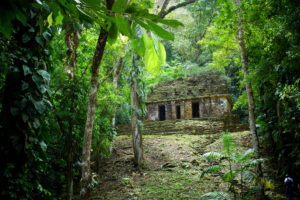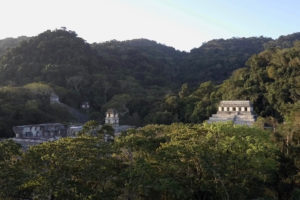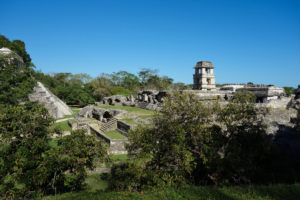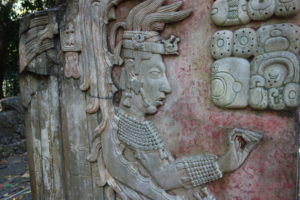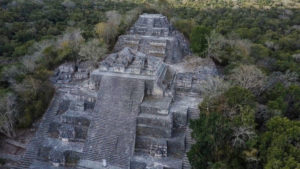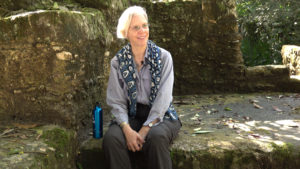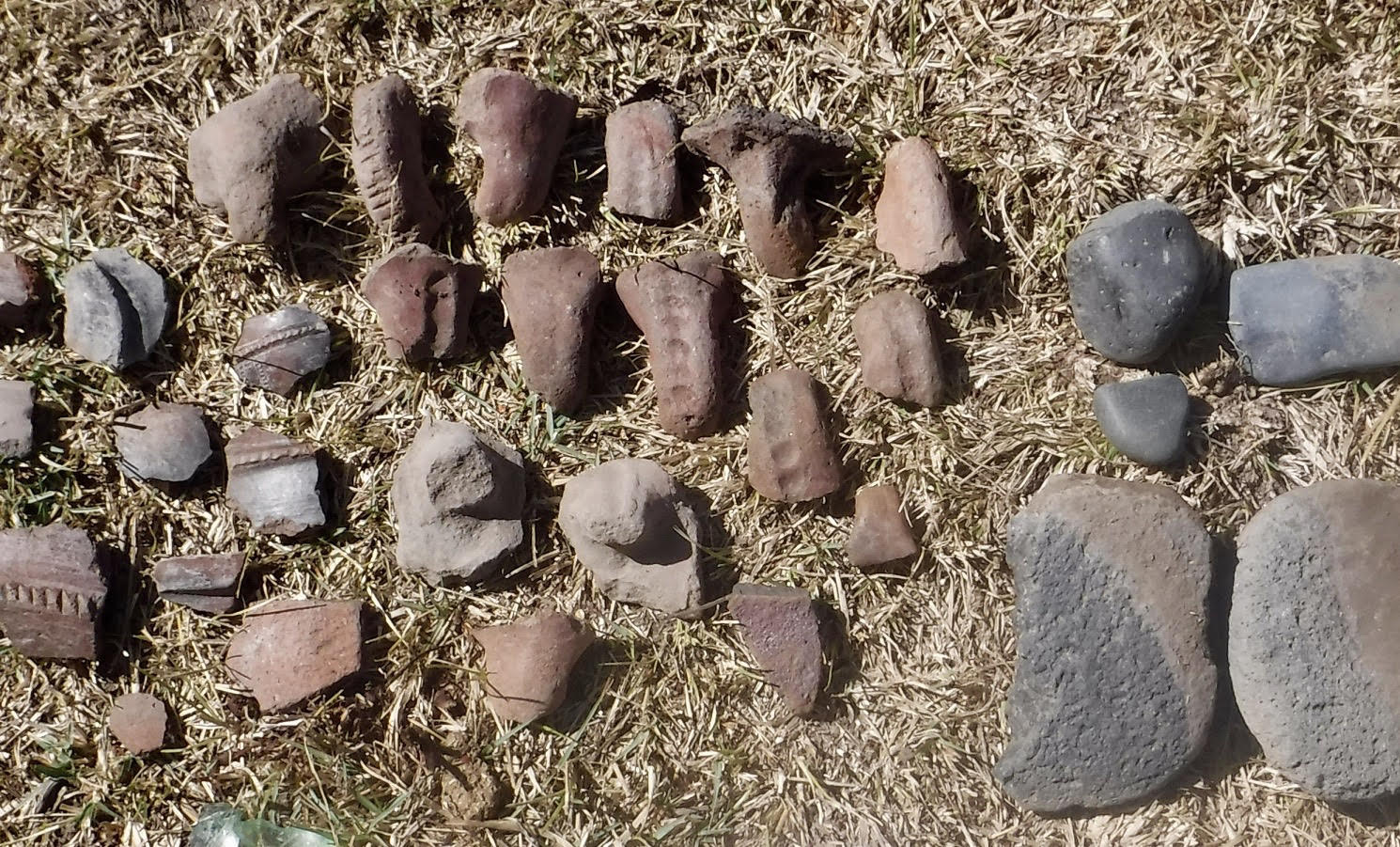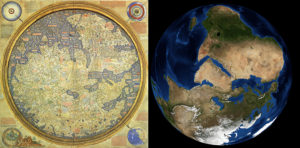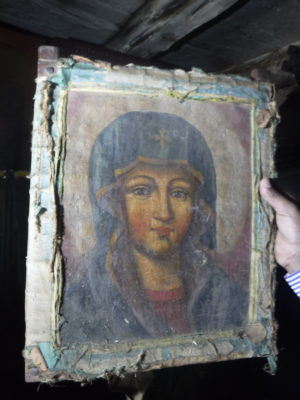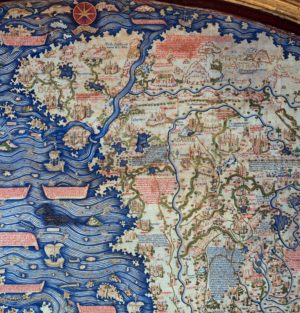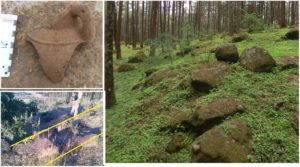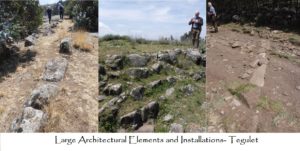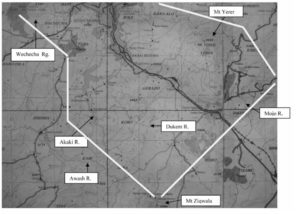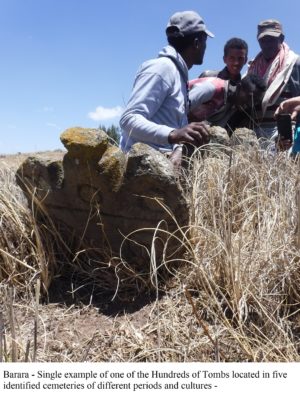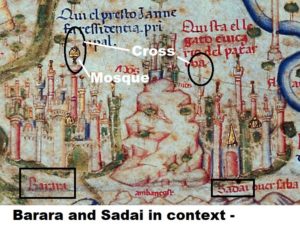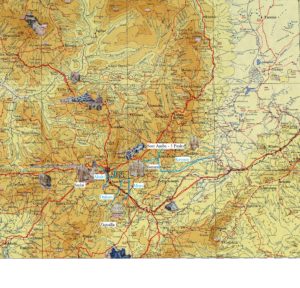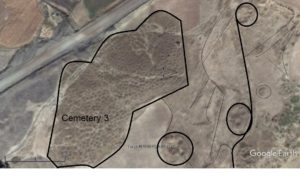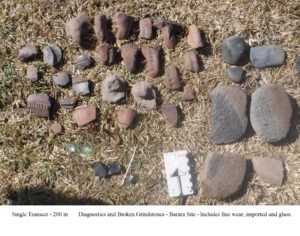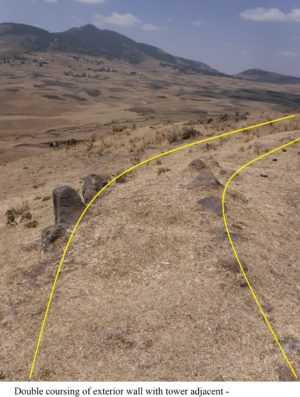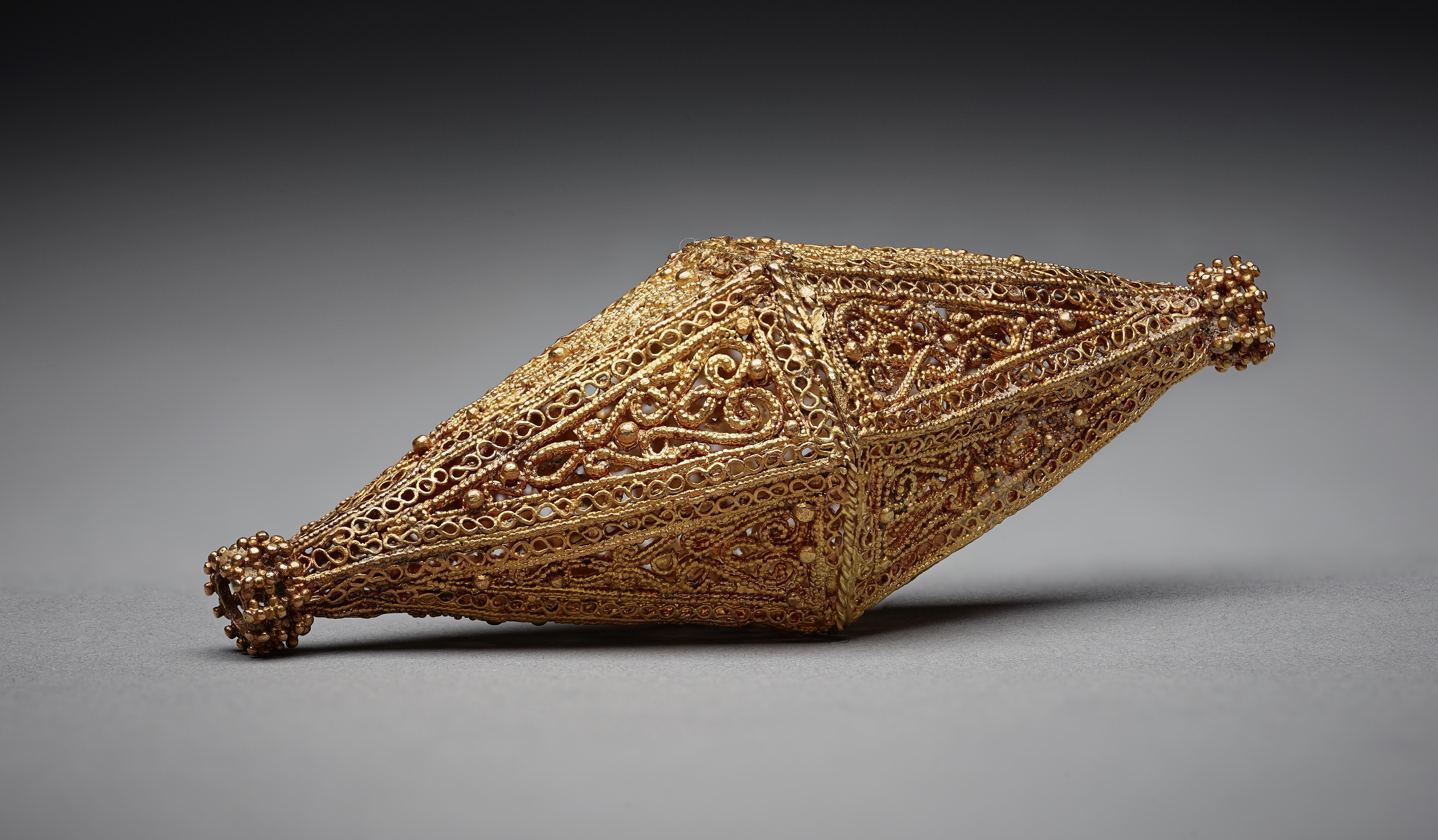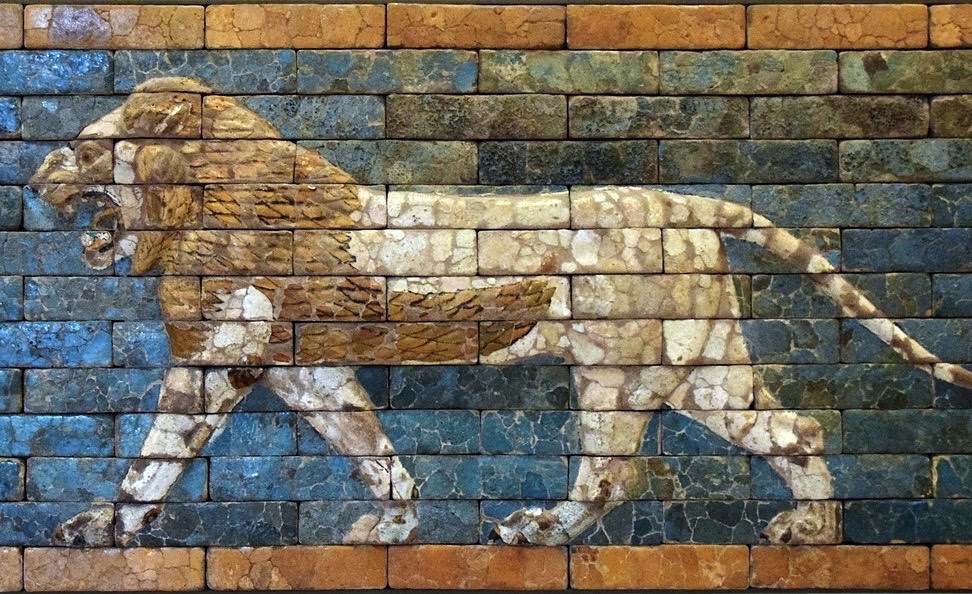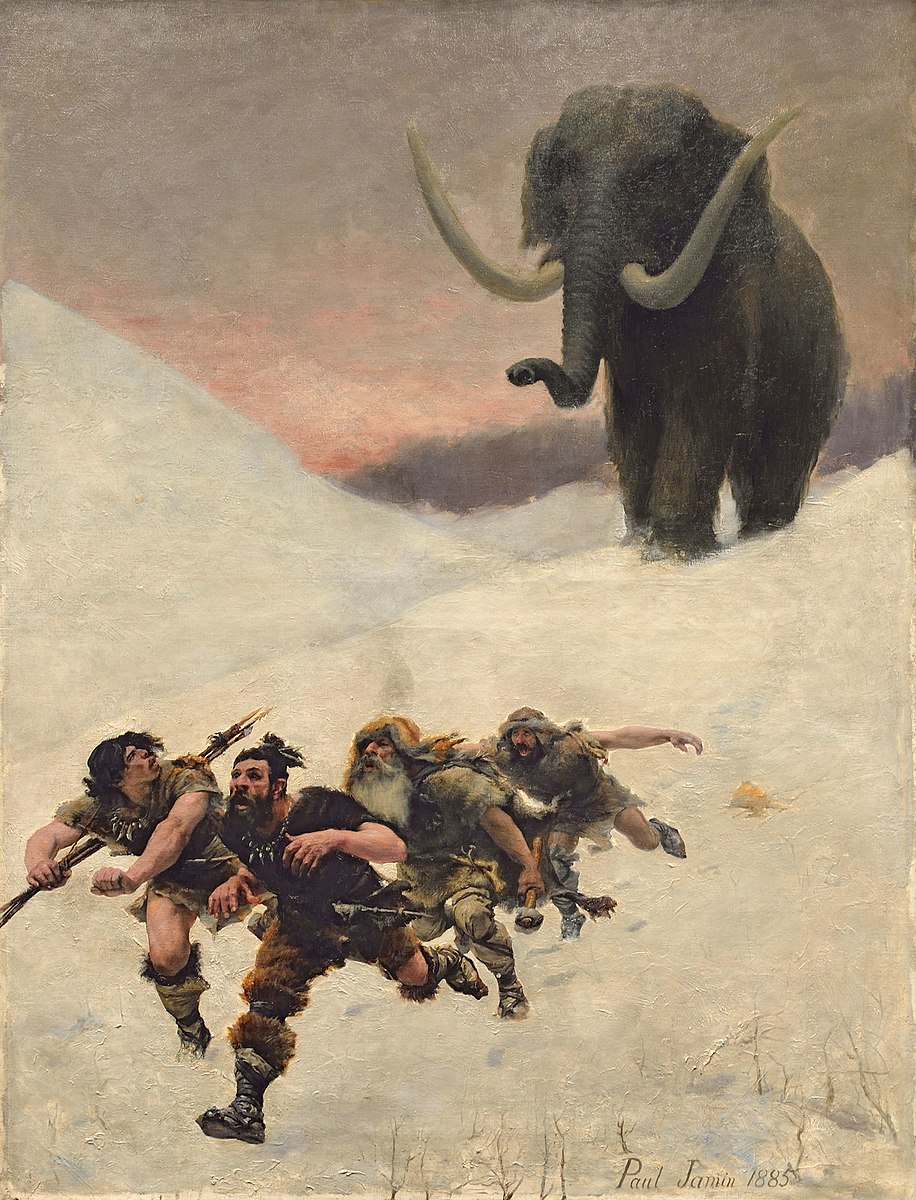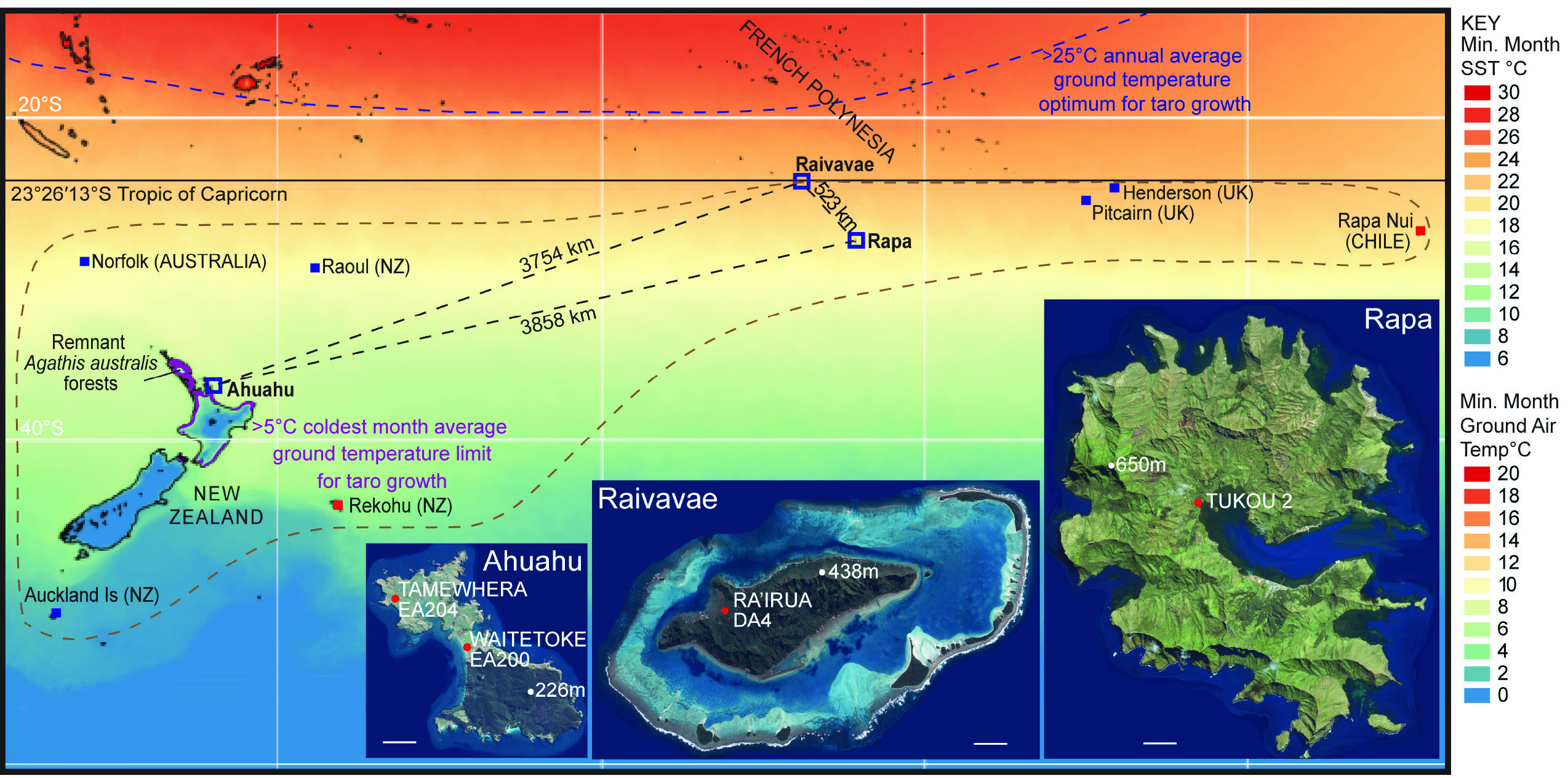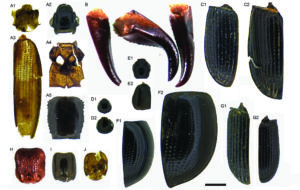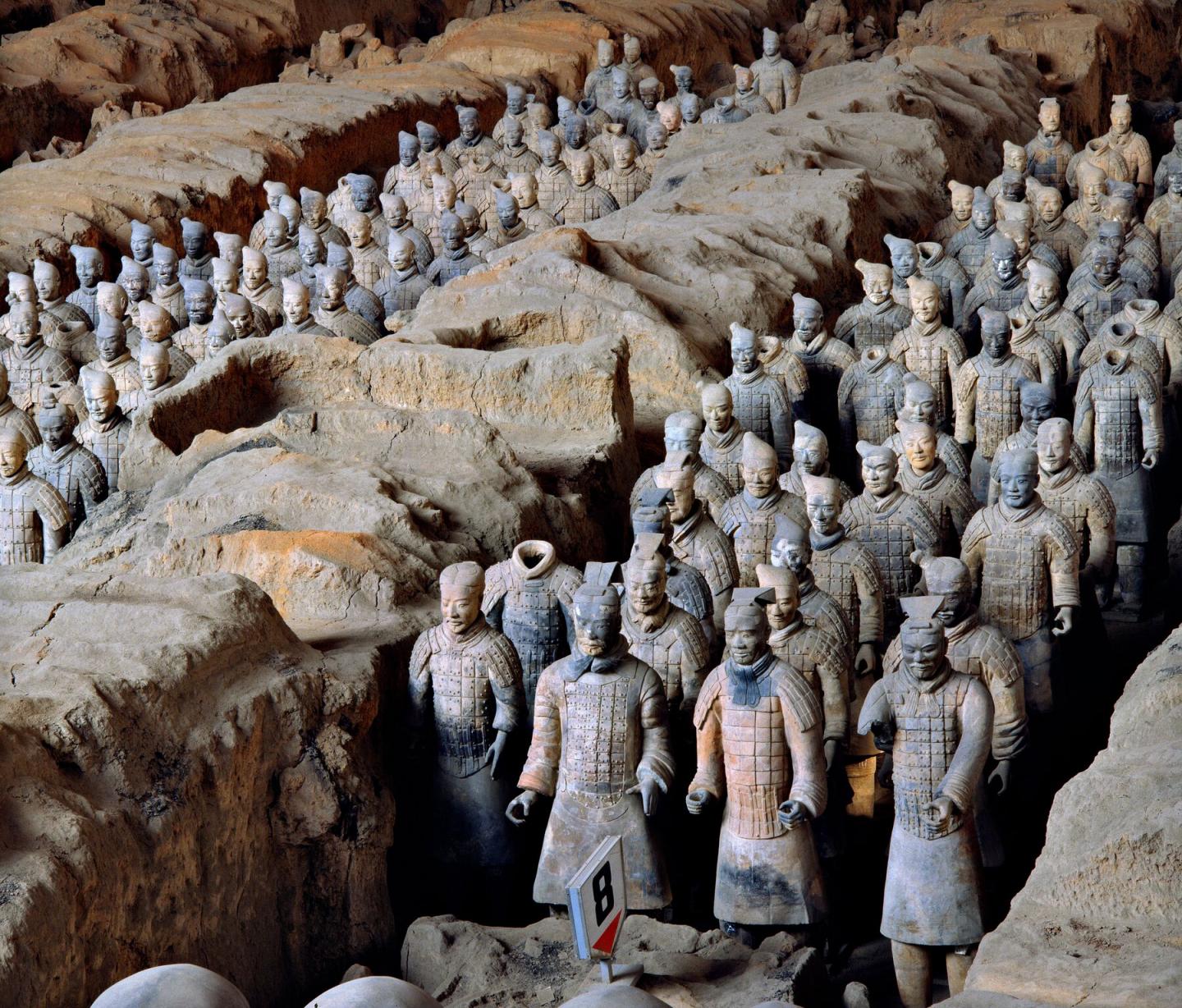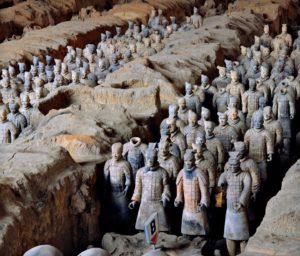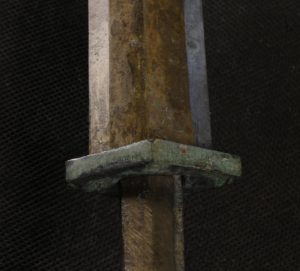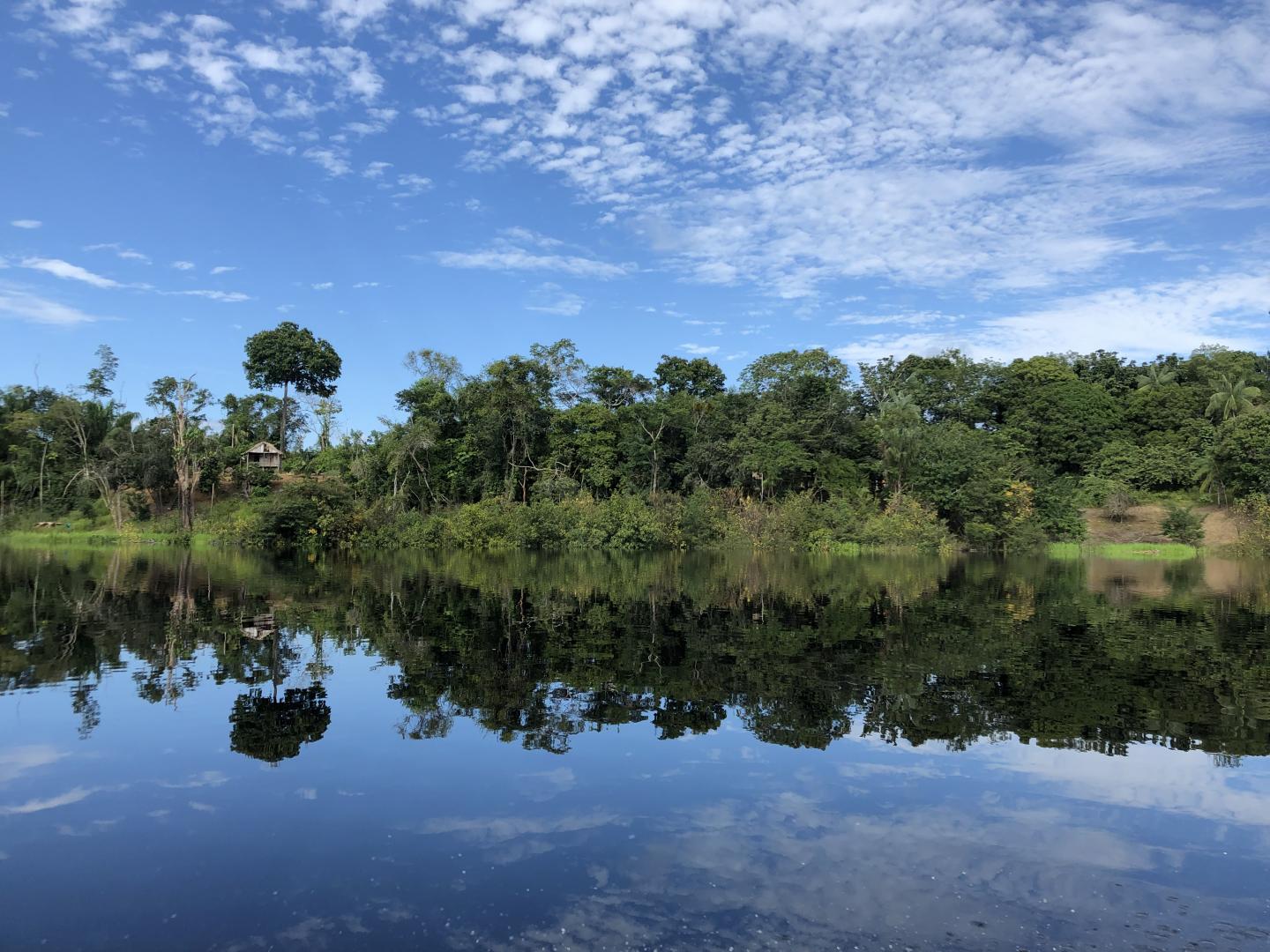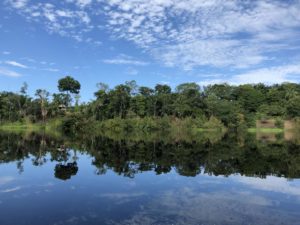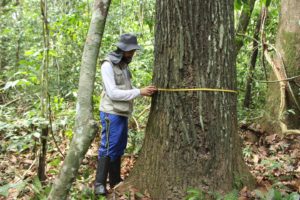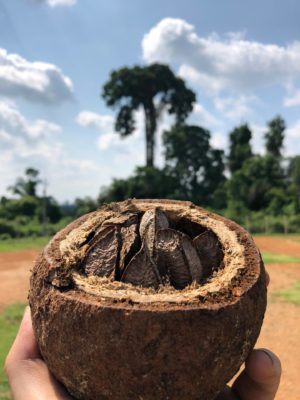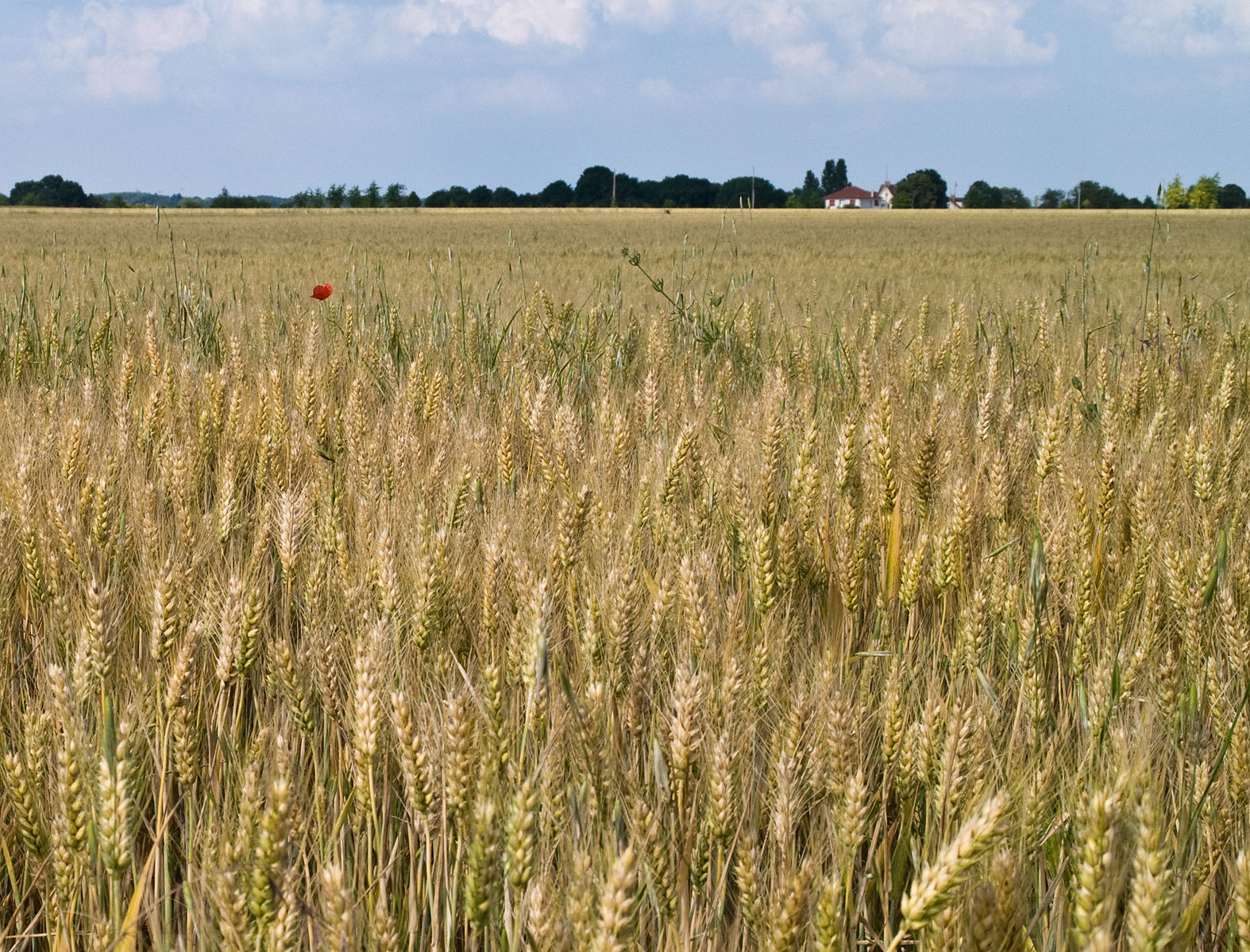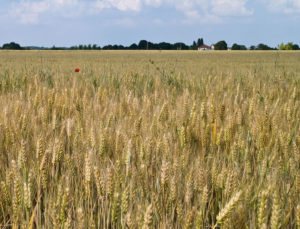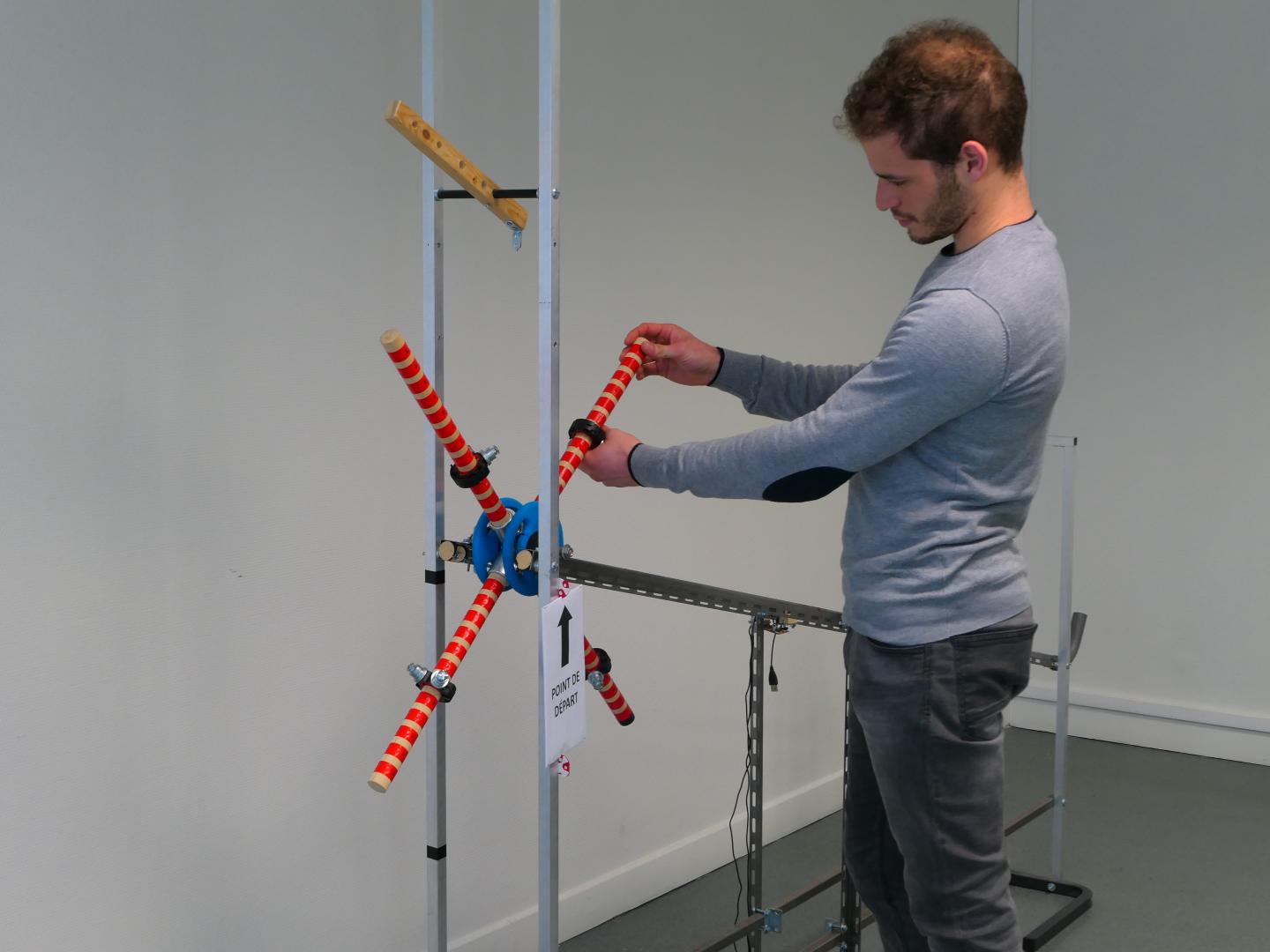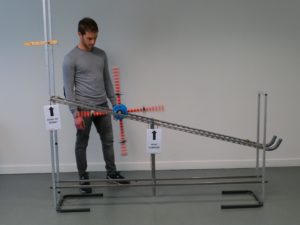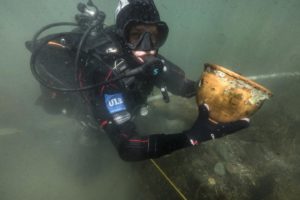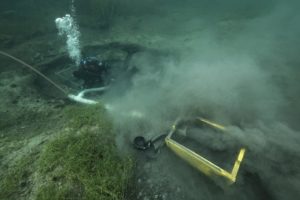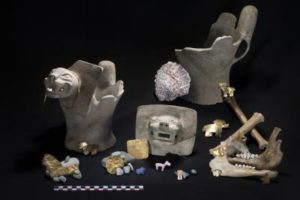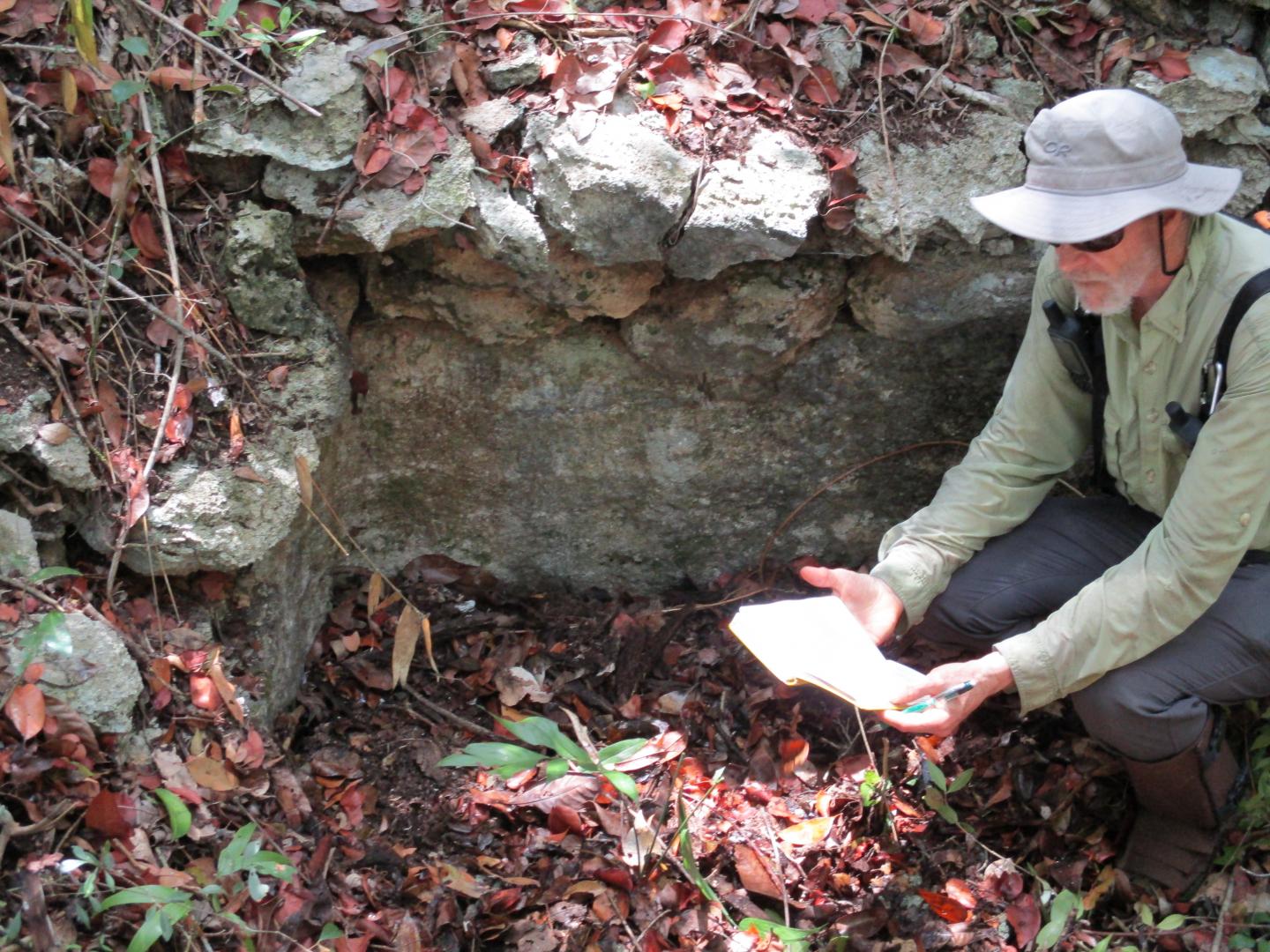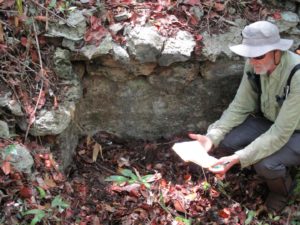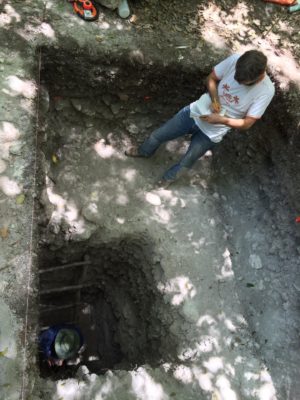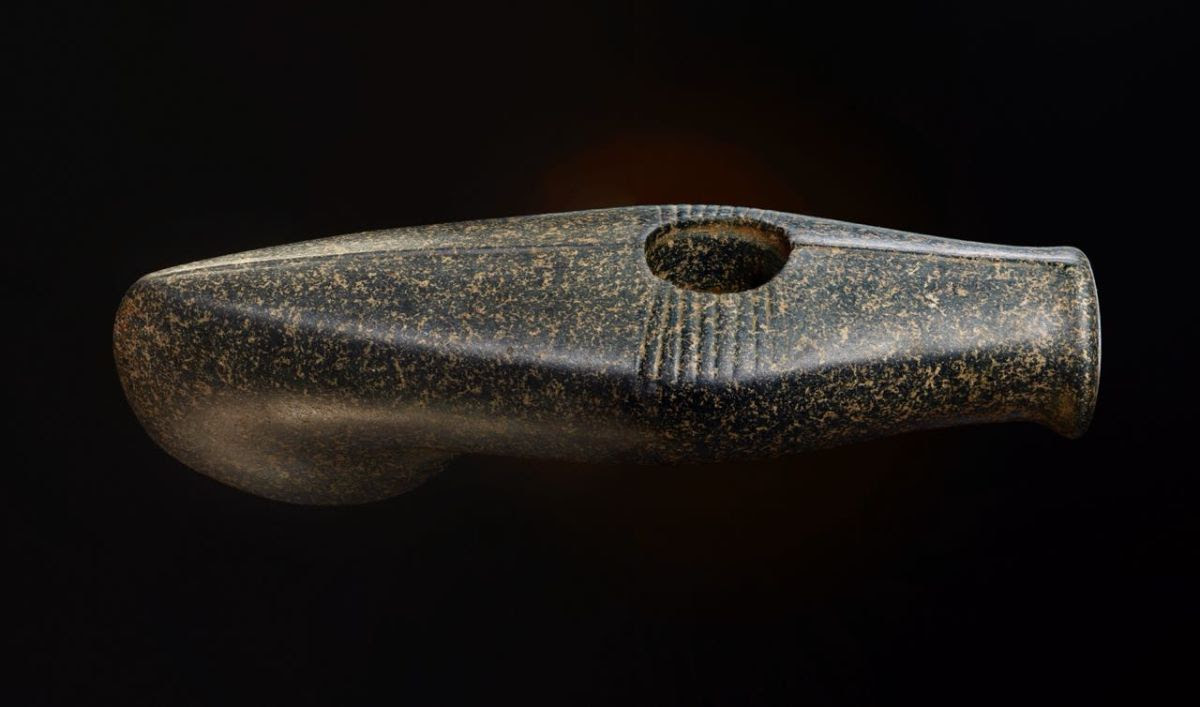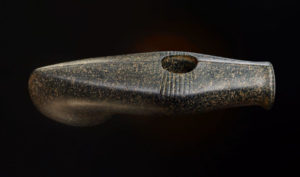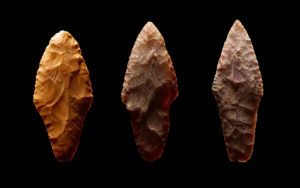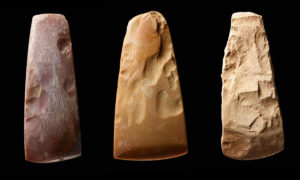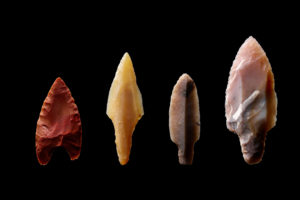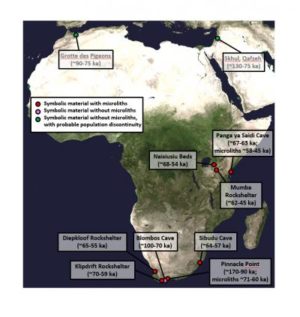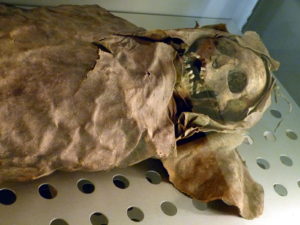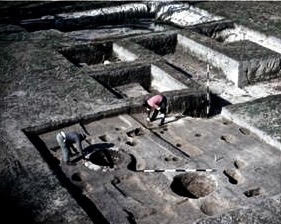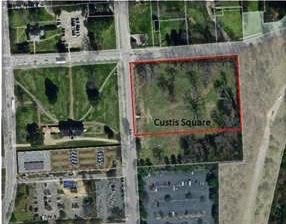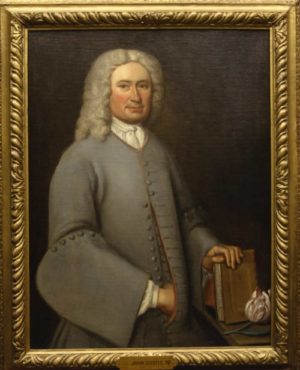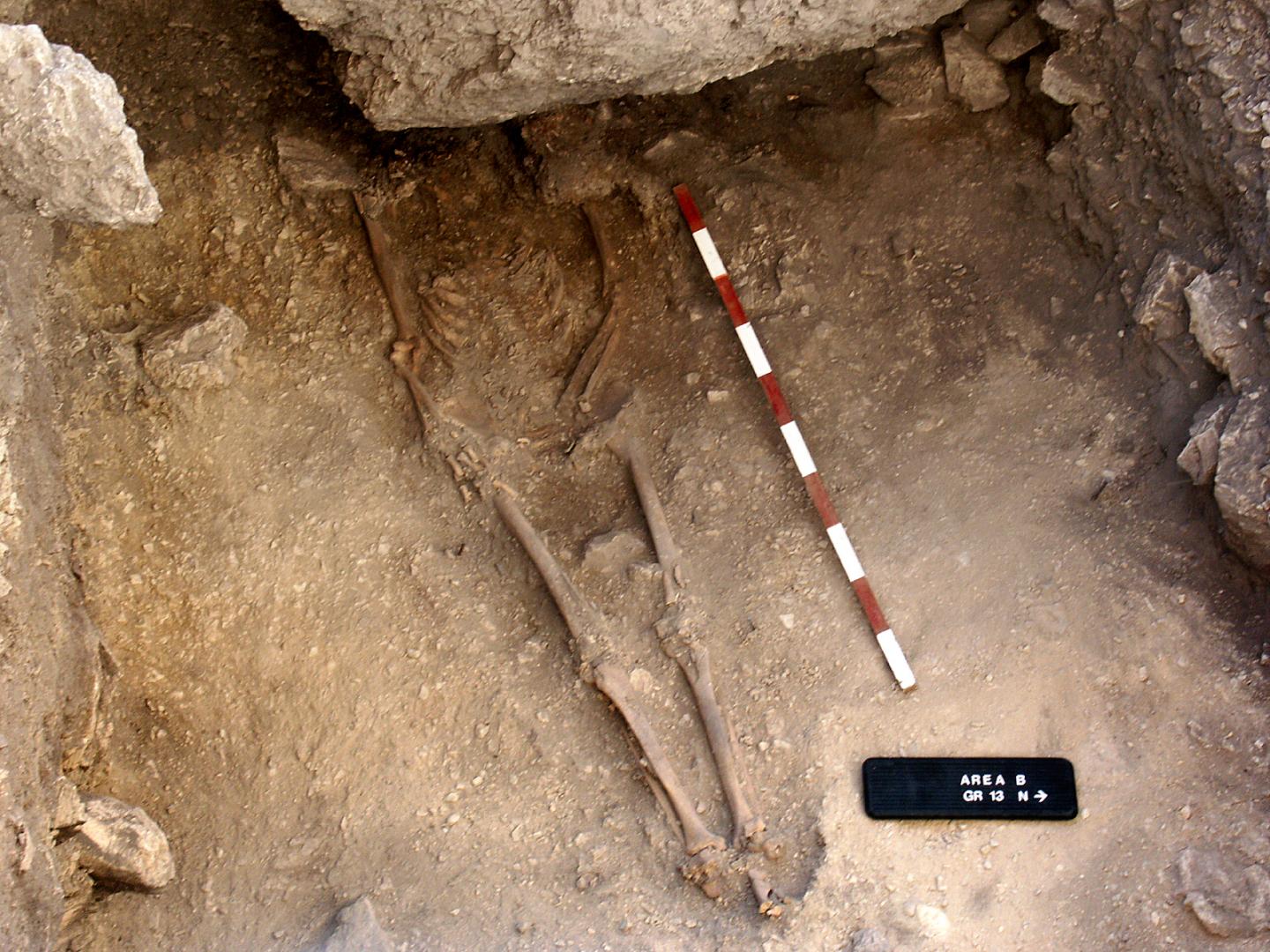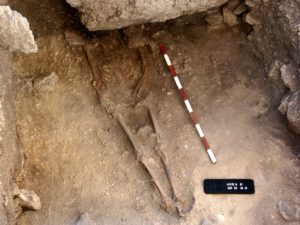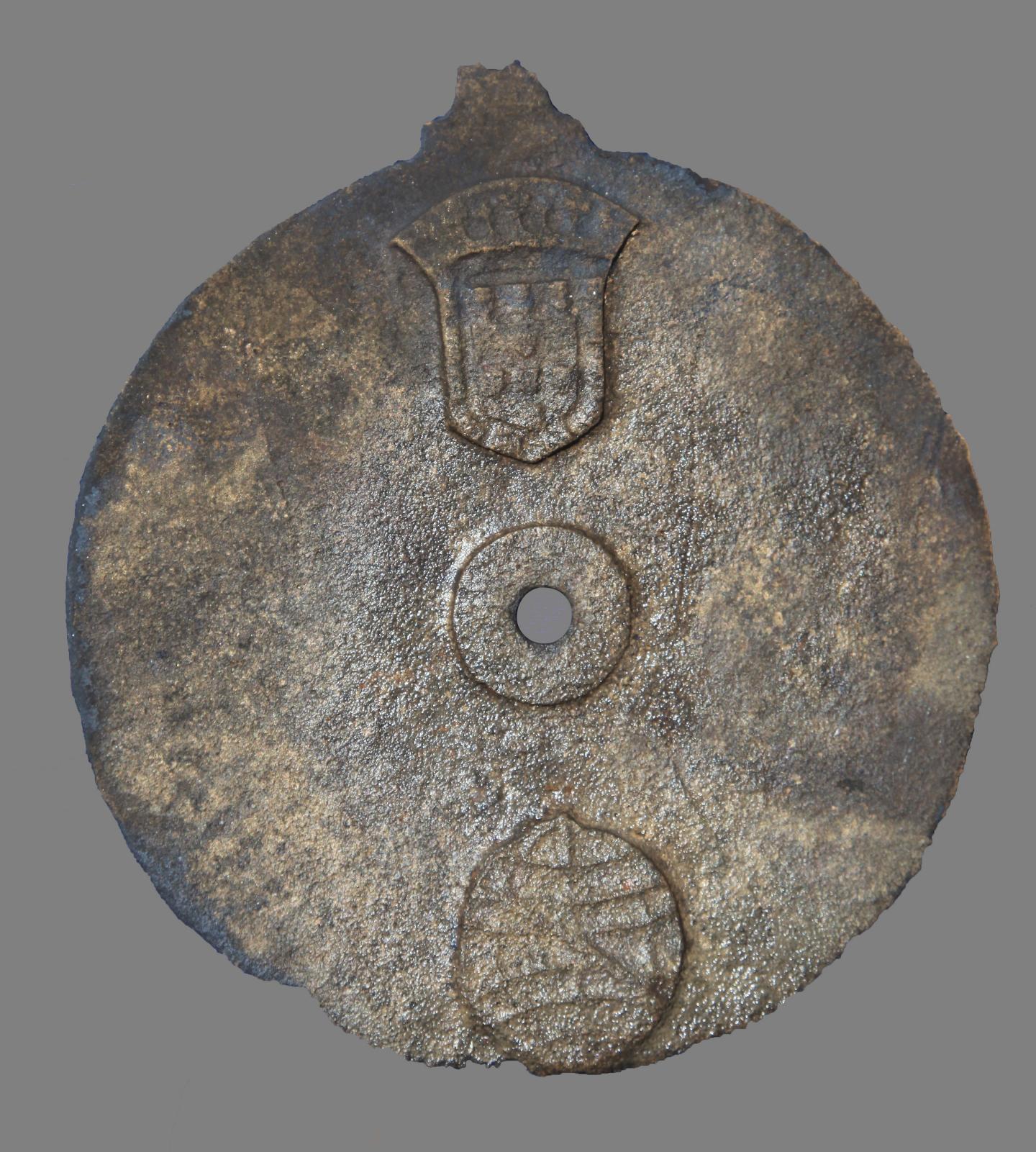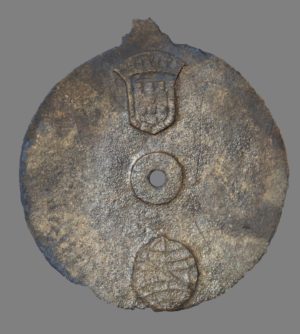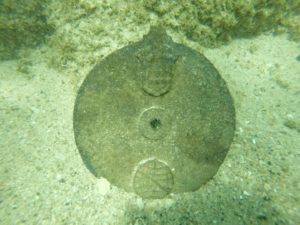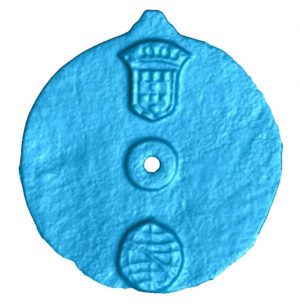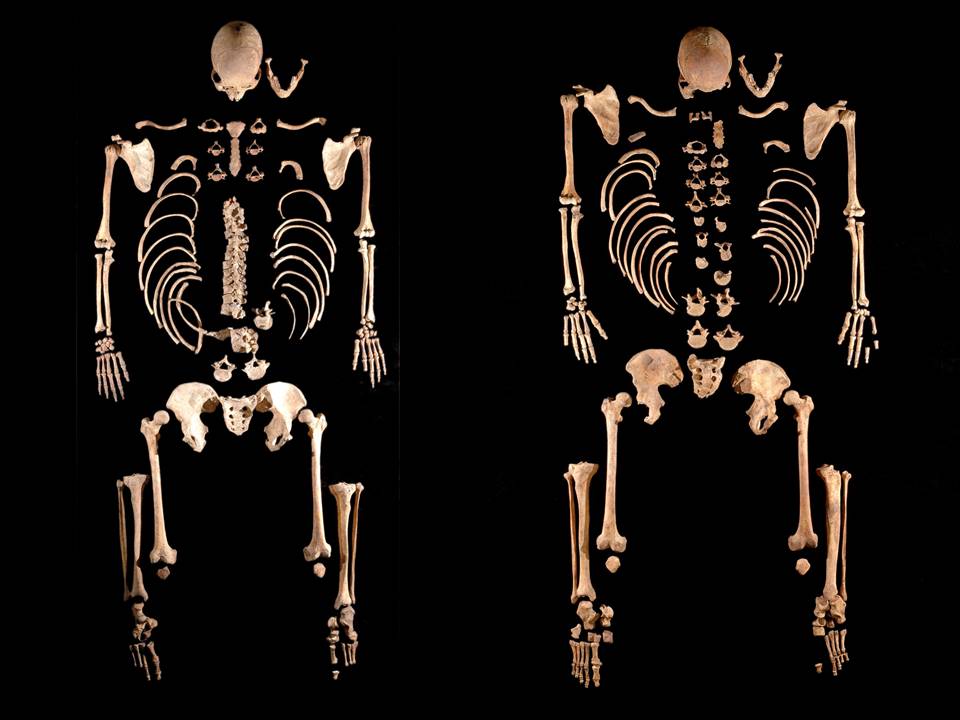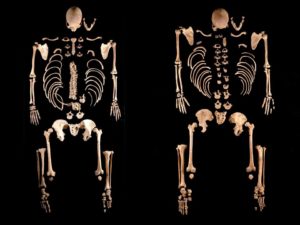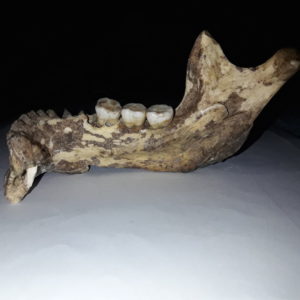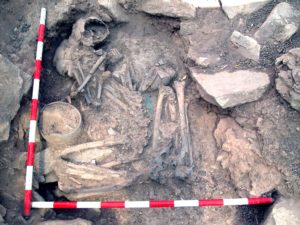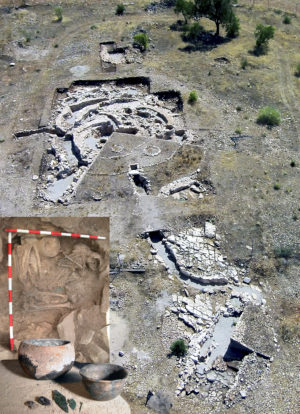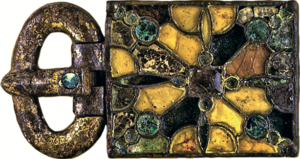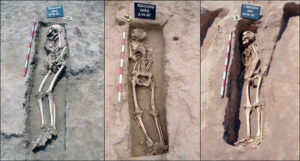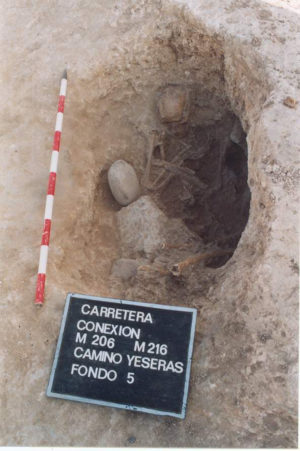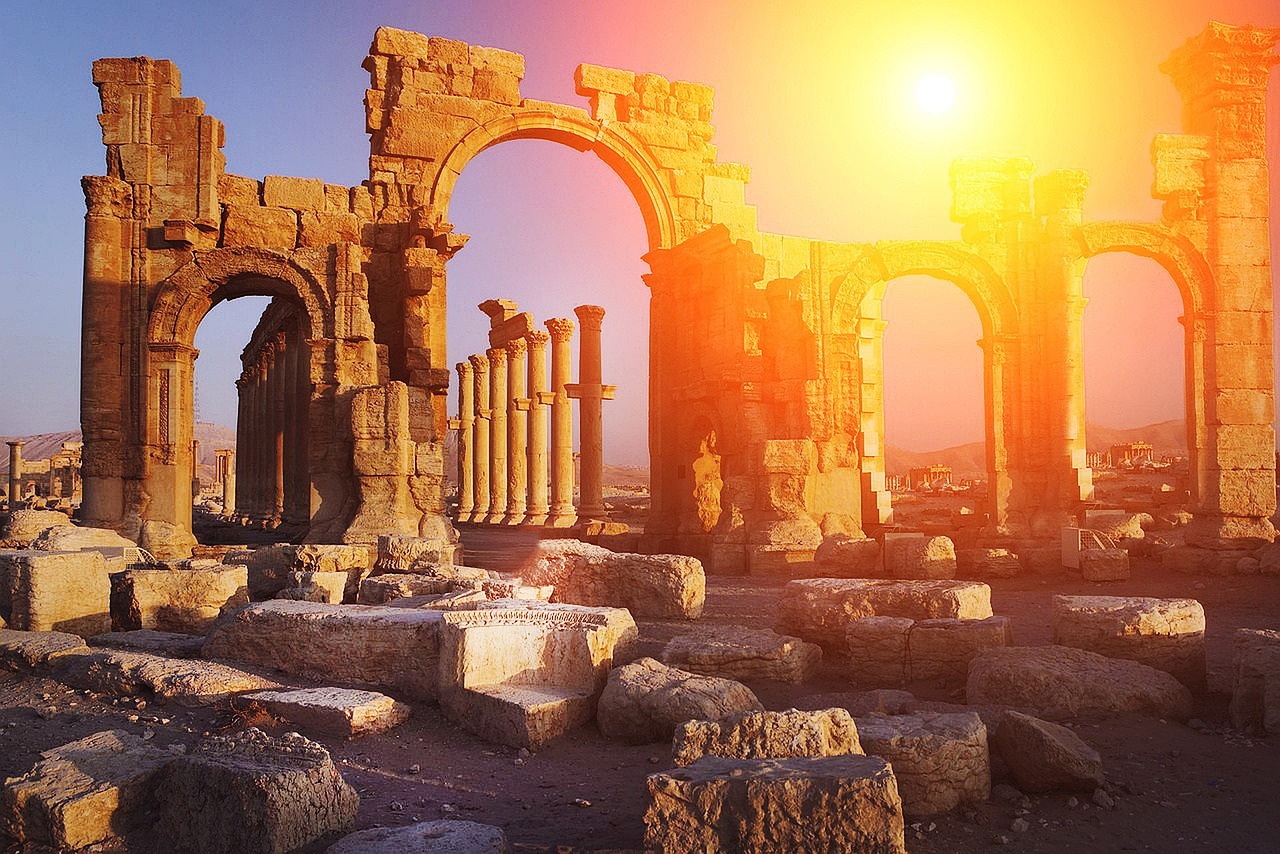
If you think you understand the politics of ‘church and state’ relations, then you don’t understand the nature of Christianity in ancient Rome. Late Roman and Christian relationships were at an intercultural turning point by the conclusion of the reign of Diocletian. Relations between Church and State developed as a product of political and social tensions evolving from certain ‘secular’ aspects of late Roman culture. Rome, as a political entity, was in transition from the more traditional ‘pagan’ practices of its past, to a more nominally ‘Christianized’ social environment. Various social, political and economic factors influenced power struggles between church leaders and their secular counterparts. Within the first half the 3rd century, Roman hierarchical order had been pervaded by bishops, whilst Christian ideology coopted many of the old pagan customs of the masses.
The ‘Christianized’ Secular Period
During the period of AD 313-363 — roughly from the time of the Edict of Milan to the death of Julian the Apostate — relations of Church and State developed as a product of political and social tensions evolving from certain secular aspects of late Roman culture. Rome, as a political entity, was in a transition from its traditional ‘pagan’ past, to a more nominally ‘Christianized’ social environment. A synthesis of religious piety, pagan ritual and political expediency played out against a backdrop of civil wars and social turmoil. As a result, the historical record reflects a complex era — one that is as much a part of the later Roman period, as it is Late Antiquity. Consequently, the many processes involved during this period are overlapping and difficult to untangle.
Similarly, the latter 4th and early 5th centuries are fraught with political convulsions as the Roman Empire was besieged with existential threats both domestic and foreign. ‘Barbarian’ hoards threatened the stability of the frontiers (literally, limes), whilst subcultural movements generated political havoc. The result was a social volatility that both influenced and was impacted by various institutions. Against this backdrop, the Church’s role seems at first glance passive — at times nothing more than a source of ecclesiastical reportage of current events. For example, Ambrose’s account of the Hunnic onslaught and St. Jerome’s lamentation of the sack of Rome appear as romantic commentaries (Heather 2005: 190; Cameron 1993: 139). However, the reality is the Church was an active player in historical events; even shaping them through the pen.
Over a sixty-seven-year arc (AD 363-430), the Church increasingly expanded into the State arena. This was the product of many causes, among them the fact that Church leadership morphed into a religious oligarchy, supplanting the venerable pagan priesthoods and establishing areas of influence at the imperial court. The result was a rivaling of the old senatorial class, as Christian clergy became the new political élite (LRE 2014: 208-31). At the societal level, Christianity superseded areas of responsibility that were traditionally the purview of Roman cults. Collectively, this stress to governmental structure transformed the nature of its institutional relations into one where Church and State aims essentially aligned. I shall now examine this period in more detail, to reveal how the Church became the State.
Strength in Numbers
It has been stated that Constantine’s support of Christianity in the early decades of the 300s may have made the nascent faith ‘the dominate religion’ of the western world (See Cameron 1993: 77, Cf. 78). This is pure exaggeration. The suggestion that any single human — albeit backed by a political system — is responsible for the sheer scope of Christianity, obscures the intersocial character of Roman-Christianity. For example, churches could be found in Britannia, Carthage and Rome by AD 313. As for the numbers of Christians themselves, as early as the first century, the Apostle James stated that ‘myriads of Jews’ were followers of Christ (Acts of the Apostles 21:20). The use of the plural noun μυριάδες is interesting here because taken literally, it translates as ‘(groupings of) tens of thousands’. When coupled with the size of the population of Jerusalem — estimated to be between 50,000 and 250,000 — this suggests a significant portion of a major eastern center were ‘believers’ at this early Christian juncture (See also Bauckham 1995: 240-43).
From this premise one may extrapolate that the numbers of Christians at non-Jewish (i.e. Gentile) centers may have been equally numerous, especially by the second decade of the 300s. Utilizing primary sources from different periods (e.g. Origen, Eusebius), some scholars have inferred that the number of believers which inhabited the Empire during the early fourth century was quite small (Novak 2001: 119-20; Mitchell 2007: 239). However, the virtual absence of data relating to the number of urban poor Christians throughout the Empire renders any such assumptions invalid. Moreover, the possibility of social prejudice — which might impact an individual’s economic or political standing — suggests early Christians from affluent backgrounds would have been less inclined to identify themselves publically (Cf. Cooper 2007: 161).
Hidden Landscapes, Hidden Agendas
Therefore, I posit that on the eve of the Battle of the Milvian Bridge, Christians were part of a ‘hidden landscape’ that was an integral part of later Roman society (Cooper 2007: 161; contra Cameron 1993: 57; Mitchell 2007: 239; Cf. Stark 1996: 5-9). After all, had the Christian community of AD 313 consisted of only a few insignificant groups existing on the fringes of society, why did the Empire expend so much energy trying to eradicate them (e.g. the ‘persecution edicts’ of AD 202, 249, 250 and 303-12) (See Timbie 2010: 96). It makes little sense. In any case, the dearth of information suggests that the true number of believers is understated in the historical records.
This may be supported by aspects of early fourth century Christian literature which, intriguingly, sought to reconcile Græco-Roman culture and Christian doctrine in an attempt to portray itself as the remedy to a crumbling ‘civilization’ (Cf. St. Basil, Letters; Lactantius, Divinarum institutionum libri VII). One must ask though, who was the intended audience of these musings? The message could not just be for small rural groups. For example, whilst Lactantius warned of an imminent ‘end of Rome’, Eusebius of Caesarea and others worked to recast imperial policy in light of Christian understanding (See also Cameron 1993: 44, 61). Later, individuals such as the Cappadocian Fathers, encouraged young Christians en masse to pursue a classical education. Arguably, the goal of these ‘preachers’ was to shape a grand narrative for all Romans, of a Christian interpretation of the classical world (Brown 1971: 84, 104; Mitchell 2007: 272). In other words, the intent was to forge different segments of society into a Christian Empire (Cameron 1993: 58-59).
The Statist Bishop
Accordingly, it may be argued that it was politically expedient for Constantine to embrace Christianity. For example, changing attitudes toward Christianity in early fourth century Rome necessitated a change in official Roman policy. This is enshrined in the celebrated Edict of Milan (Cameron 1993: 51). Effectively, this decree rescinded all remaining official forms of persecution throughout the Empire. Furthermore, having been issued jointly by Constantine and Licinius — representing both the Western and Eastern halves of the Empire — it may underscore the utilization of Christianity as a sort of a ‘national salve’ for a divided society recovering from civil wars. However, when Licinius passed antichristian decrees — such as the banning of Christian assembly and synods — Bishop Eusebius reacted with swift condemnation (Eusebius, Vita Constantini 1.51-54.1, 2.1-2).
It has been suggested that Licinius was predisposed to favor Christianity (Cameron 1993: 57). So, how does one explain a series of anti-Christian legislation? It may be dismissed as hyperbole on the part of Eusebius (Mitchell 2007: 242). On the other hand, it is possible that there existed an antichristian element in the eastern imperial court that pressured Licinius (See also Mitchell 2007: 242). If so, this could highlight regional hostilities from certain segments of pagan communities towards Christian groups. Regardless, Eusebius’ reaction may have been further impetus for Constantine to eliminate Licinius. That is to say, it provided Constantine with ecclesiastical support for pursuing a war with Licinius. As such, this episode amplifies the essential role bishops played in fourth century social-politics as Church and State goals blended (Mitchell 2007: 241, 261; See also LRE 2014: 151).
However, the role of bishop was not reserved to acting the part of a religious consigliore to the Emperor or community organizer. Eusebius’ role as ‘official biographer’ for Constantine I helped to mold his reputation as a ‘Christian king’. Thus, it was practical for the emperor to cultivate a relationship with an individual that possessed great influence among Constantine’s ever increasing Roman-Christian subjects. In a sense, as he strives to describe the emperor in a positive light, Bishop Eusebius mirrored the pagan biographers of his time. Such as Ammianus account of Julian’s restitution of pagan rituals in AD 362 (See Cameron 1993: 60-61; Cf. Ammianus 22.5). In this fashion, the bishop had clearly become a valuable political tool at the imperial level.
Onward Christian Soldiers
On the basis of archaeological, epigraphic and textual evidence, some scholars have argued that Christians did not make up an appreciable size of the Roman army, while others have suggested that there were entire ‘Christian legions’ (Dando-Collins 2010: 461, 520; contra Mitchell 2007: 247; Horsley 1987: 123-24; Osborn 1997: 84-85; Cf. Acts 10:1-48). To be sure, during the third century, Tertullian showered hostility on the idea of believers enlisting in the North African legions, suggesting this was a common practice to do so (Dunn 2000: 30-31). However, early to mid-fourth century sources appear to be somewhat silent on the subject (See Dando-Collins 2010: 80). On the other hand, two units of the Praetorian Guard displayed Christian motifs on their shields.
What can be said then?
Because recent persecutions would have been carried out by the army, and given the disproportionately high number of pagans serving in the legions, it is likely that antichristian bigotry was common within the Roman legions during the second decade of the fourth century. Reasonably, this might have quieted soldiers in some quarters from openly confessing any Christian beliefs (Cf. Kuefler 2001: 107-08). This might explain why early fourth century sources are somewhat ambiguous as to their numbers. Conversely, it is plausible that Licinius’ edict compelling soldiers to make sacrifice is indicative of the presence of Christian soldiers openly refusing to participate in the pagan ritual (Barnes 1981: 71). That being said, it may follow that in the east Christian soldiers were more conspicuous.
For example, in AD 320, Pachomius founded a prototype monastery in Tabennisi, Egypt which emphasized communal living over solidarity. An interesting aspect of Pachomius was the fact that he was a former Roman soldier. In addition, his personal philosophy emphasized collectivism and mutual hard work within a ‘community of believers’, or ‘soldiers of Christ’ (Cameron 1993: 82). It may be inferred that his military background was expressed in the collective and ordered manner his monasteries were run. Within a few years, Pachomius had converted seven thousand individuals to an ascetic message (Brown 1971: 99, 101). It should be noted that these monks were in many cases intellectual members of Roman society who were drawn from (potential) public service into a Church lifestyle at the expense of worldly pleasures and general comforts (Brown 1971: 101; Cf. Mathew 19:21-22). It would be interesting to speculate on how many of Pachomius’ converts were former Roman soldiers, but the answer to that question may never be known.
Irrespective, one may get a sense of the complex and changing nature of Roman identity as the relationship between Church and State developed. But how did austere themes become popular amongst hedonistic segments of society? It may be argued that, once legalized, the Church simply ‘Christianized’ pagan philosophies by adopting many of their shared virtues (See Brown 1971: 96-98). For example, fourth century Roman society was already conditioned by Neoplatonism and its pagan forms of asceticism (Cf. Mitchell 2007: 270). Moreover, pagan heroes, such as Plotinus, may have even inspired the lifestyle of Christian monks, such as Anthony the Great (See also Cameron 1993: 82).
A Woman’s Place
According to textual evidence — such as hagiography, letters and imperial decrees — it appears that one of the impacts of Christianity on Roman culture was the more active role women began to play publicly (LRE 2014: 207; See also Mitchell 2007: 87-88). This was counterintuitive to mos maiorum and probably a result of the many functions women held in the early Church (e.g. Luke 8:1-3, Romans 16). However, it should be noted that a Roman-Christian’s concept of ‘public’ only selectively differed from the more pagan traditions of paterfamilias and its hierarchal structure vis-à-vis a woman’s ‘place’ (Cf. Allison 1999: 11; See also Cooper 2007: 54-55, 101). In other words, while women may have been charged publicly with certain church duties, they still held a subservient place to men in Roman state society (See Cameron 1993: 24).
Nevertheless, changing attitudes with regards to men and women was accompanied by a change in existing Roman law. For instance, in AD 320, Constantine repealed the anti-celibacy article of the lex Julia de maritandis ordinibus which forfeited the rights of inheritance to a young woman if she became celibate — a condition of service to the Church (Cameron 1993: 128; See also Cooper 2007: 112-13). Essentially, this law was intended to encourage marriage and childbearing. The repeal, however, represented a significant shift in policy as it had the potential of impacting the social structure of the Roman state by abolishing financial penalties meant to preserve property for the materfamilias in the traditional Roman household (See ‘corpora of property’ in Cooper 2007: 112). I’m not suggesting a demographic convulsion to the state, per se.
Nevertheless, the net result was young women of different social standings taking celibacy vows and entering convents. A case in point may be seen in the young widow Melania the Elder. A noblewoman, she left her only surviving son in Rome to make a pilgrimage across the Empire and live at a monastery (Salisbury 2001: 223-25). A somewhat different example is the life of Macrina the Younger (Fig.3), the daughter of Basil the Elder (Cameron 1993: 24, 83). While Macrina’s early social status is a bit murky, she eventually adopted asceticism and went to ‘live in the wilderness’ while preaching against classical learning (See Holböck 2002: 56-58). From a traditional standpoint, this is shocking. The idea of women from Roman families not marrying to enlarge and preserve the heritage of their paterfamilias, and embracing a public role preaching against conventional Roman education and Græco-Roman virtues, symbolizes a transformation in society, if not in the role of the materfamilias herself (Cf. Cooper 2007: 111-14). That is to say, essential elements of Roman identity (i.e. the ‘Romanness’ of being Roman), were either altering, or, if you prefer, ‘declining’ from their classical perch.
Moreover, by allowing property to follow non-materfamilias females into the monastic world, it had the long-term effect of transferring great amounts of public wealth from one institution — the State — to another — the Church (See Brown 1971: 108-09; Cf. Cooper 2007: 113). This may be deduced from Constantine’s edict allowing Churches to inherit property (Codex Theodosianus 16.2.4). For example, upon her father’s death, Macrina had her family’s estate converted into a covenant (Smith 2006: 224). Thus, a domain which could have possibly housed generations of Roman families invested in civic service, became a perpetual home for virginal women vowed to Christ, and poverty. For a society rooted in public consumption and materialism this had long-term implications (Cf. Heather 2006: 120-23). In any case, it may be argued that bishops, monks and nuns — without family obligations, well-funded, and possessing the ear of the people — redeveloped the Roman landscape.
The Thirteenth Apostle
Another fascinating aspect of the Church and State’s ever-changing relations may be seen in the Decurion controversy of the 320s. In c. AD 320, Constantine issued a judgment that ‘clerics’ were ‘not to be taxed’, and they and their immediate family were excused from civic duties (Codex Theodosianus 16.2.10; Cf. Codex Theodosianus 16.2.1, 2). This may have been an honest attempt to encourage public participation in church service by easing any financial hindrances on Christian charity, while elevating the State’s new Religio Romana (Cf. Mitchell 2007: 258). After all, the Church could aid the State in helping urban and poorer communities. However, it may equally be viewed as a sign of political theater, such as Constantine’s law exempting rabbis from public service (Codex Theodosianus 16.8.2). Edicts such as these generally elicit a positive reaction from their target audience. This is not to impugn Constantine’s personal religious convictions, but to point out his dual nature as a Christian Emperor.
Irrespective, Constantine created an incentive for citizens to join the clergy which had unintended consequences. Members of the Decurion class which was responsible for the maintenance of public facilities within local Roman communities, began to enter church administration to circumvent levies intended for civic amenities (LRE 2014: 68). By AD 326 Constantine had clarified the law to exclude Decurions from joining the clergy (LRE 2014: 69). It may be implied that over a few years an urban crisis had ensued: aqueducts and bath houses probably fell into disrepair, and annona (i.e. free corn dole) distribution declined (See also Harl 1996: 263-64). Here, it may be observed that a shift from pagan to Christian beliefs was motivated strictly by state monetary benefits.
Nevertheless, this should not be construed as cynicism of religious conversion. For example, during the early fourth century Christians already numbered among the senators of Rome (Potter 2014: 309). Evidence for this may be seen on the sarcophagus of one Junius Bassus — ‘a man of senatorial rank’ — which contained Christian iconography and inscriptions (Lee 2000: 97). However, one may infer from Zosimus’ writings that these ‘Christian senators’ were a minority status during the 320s (See LRE 2014: 78). Unsurprisingly, with a pagan majority, hostilities from the senate toward anti-pagan imperial decrees persisted throughout the fourth century (See Mitchell 2007: 247-48). That being said, it would not have necessarily benefited a senator’s reputation among colleagues to be labeled a ‘Christian’.
Conversely, Constantine the Great waded into a religious debate that may hint at the depth of his personal convictions. In the early 320s, the divinity of Christ was called into question by the Arians who disputed the essence of Christ as equal to God the Father (Cameron 1993: 69-70). The result was a series of synods, culminating in the first ecumenical council being called at Nicaea in AD 325 by the emperor — a political figure — to resolve the matter. Unlike some have suggested, however, I believe it was part of Constantine’s intention to have the nature of Christ defined by the council, not just in an attempt to reconcile disparate Christian sects, but as a means of solidifying public support from the non-Arian majority (See Mitchell 2007: 282). In this way, Constantine would have aligned the Church with his administration, and better integrate the bureaucracy into his post as ‘God’s Representative’ (Cf. Cameron 1993: 68). In any case, Constantine’s usage of co-substantial, literally ὁμοούσιος, to define Christ relationship with God (the Father) was so profound that it has influenced.
Churchscape: Mary is Good to Think With
As we progress through the century, Church and State relationships become most visible in the effect they had on the architectural landscape. For example, in Ephesus, the Church of Mary was constructed during the reign of the Eastern Roman Emperor Theodosius II (Cameron 1993: 172). The location and choice of subject for this dedication is unsurprising as it is Church tradition that the Virgin Mary ascended to Heaven from Ephesus (Cameron 1993: 172). However, rather fascinating is the fact that the basilica was erected next to an earlier Græco-Roman temple — the Temple of Hadrian Olympios — dedicated to the Imperial Cult of the Emperor Hadrian who identified himself as Zeus. Now, on the one hand it may be argued that to the Church, the construction of a sacred structure in this location symbolized a triumph of Christian Rome over its pagan past. However, the temple’s 4th century history conflicts to a certain degree with this interpretation.
For instance, in AD 380, the Proconsul of Asia funded a restoration of the Olympieion which included the insertion of panels depicting the Christian Emperor Theodosius I alongside the goddess Artemis (the Roman Diana) (Cameron 1993: 172; Wilkin 1999: 45). Ironically, that project was coterminous with an edict issued by Theodosius which declared that citizens ‘should live by that religion which divine Peter the apostle is said to have given to the Romans’ (Codex Theodosianus 16.1.2). This presents a paradox. Why would a devoted Christian emperor be featured prominently alongside a pagan goddess? Perhaps the proconsul was expressing his own antichristian bigotry? This is unlikely. A staunch believer and close friend of St. Jerome, the proconsul was Nummius Aemilianus Dexter, the son of Bishop Pacianus (Jerome, De Viris Illustribus Preface, CXXXII, and XXIII).
On the other hand, it may be assumed that work on the renovation was conducted by Ephesian artisans (See Laale 2011: 234). Conceivably, it could follow that Dexter might have been channelling antichristian sentiments from a pagan populace. That is to say that ‘pagan Ephesians’ wanted to associate the emperor with Artemis, and Dexter was merely ‘going along’ for the ride. This interpretation may find support in past imperial decisions, such as Theodosius’ decision to keep temples open for ‘artistic’ reasons (Codex Theodosianus 16.10.8). That decision was meant to placate public anxieties regarding pagan traditions. If this is the case, it could be implied that the late 4th century Ephesians resisted Christianity (Cf. Book of Revelation 2:1-5). Of course, this conclusion also presupposes a strong antichristian bias amongst a population that is presumed to have been predominately pagan.
However, I posit a different solution. It wildly known that Asia Minor had a long and integrated socioeconomic history with the goddess Artemis, and that Ephesus is considered her ‘birthplace’ (Ferguson 1987: 198; Beard et al. 1998: 360). Equally, Christianity possessed a strong presence in the region quite early, and Christian-Ephesians had a history of encounters with the followers of Artemis (Acts of the Apostles 19:23-41). For example, by the end of the 1st century, pagan Ephesians dissented from their Christianized counterparts, typically over monetary issues (See Acts of the Apostles 19:25). I suggest that this cyclical dialogue between two groups created a pagan:Christian dichotomy which eventually diffused within an idolized interpretation of the Virgin Mary (Cf. Book of Revelation 2:1-5). In other words, Mary was beginning to overshadow or encapsulate Artemis.
This may be deduced from central characteristics of Artemis, such as her virginity and the requirement that her priestesses be virgins (Llewellyn-Jones 2006: 89; Cf. Mitchell 2007: 108). Separately, the maintenance of the imperial cult — as supported by the emperor and enshrined in the Temple of Hadrian Olympios — was essential to the political standing of Ephesus (See also Trebilco 2007: 30). That being said, it is probable that late 4th century Ephesians were simply holding onto traditional pagan symbolism for a practical reason (e.g. financial, or political), whilst genuinely embracing Romanized Christianity which — through a diffusion with a pagan cult — had become more tolerable (Cf. ‘religious fluidity’ in LRE 2014: 222).
Interestingly, it is the process of diffusion — encoded in the Theodosius/Artemis artwork of the Temple of Hadrian Olympios — that is essential to understanding the nature of Church and State relations at Ephesus. In short, it becomes evident that paganism preconditioned the Ephesians for Marion theology. Or, put another way, Artemis might be observed as the pagan parallel to the Virgin Mary. Accordingly, the display of a Christian emperor with a pagan deity may not necessarily have compromised an Ephesian’s beliefs because of a bifurcated religious identity rooted in commonalities between competing cults. The long-term implications of this religious synthesis may be observed in the relative success 4th century Christians had in promoting the cult of the Virgin Mary within Asia Minor (Mitchell 2007: 108).
For example, the (one time) virgin Empress Pulcheria and her sisters were key players in the perpetuation of Marion Christianity within the Roman State (Mitchell 2007: 108). Perhaps the result of their efforts can be found in the building of the Church of Mary at Ephesus. Fascinatingly, the timing of the church’s construction (c. AD 420s) coincided with the Nestorian debate over the nature of Christ and the usage of the title ‘Mother of God’, literally Θεοτόκος (Mitchell 2007: 190-91). Thus, an interreligious doctrinal statement might be implied by the edifice. Collectively, a triangulating picture emerges as pagan tradition is interwoven into Church and State politics. The irony being that an active pagan complex also housed a shrine to the mother of Christ.
The Twin Eternal Cities
Turning to the city of Rome — once a thousand-year bastion for paganism — Christianity found architectural expression which reflected both the evolution of Church and State relations that facilitated a ‘decline’ of paganism (contra Salzman 2010: 191-223). Case in point, in AD 386 Emperor Theodosius I commissioned that a new cathedral, the Basilica Papale di San Paolo fuori le Mura, be erected over a smaller Constantinian period structure. The expansion of a church structure might be an architectural metaphor symbolizing political diffusion between State and Church objectives.
In addition, it may provide a picture of the increasing social inclusion of Roman-Christians within urban Italy (See also LRE 2014: 178-79). Still, the basilica is located outside the Aurelian Walls away from the pagan temple center and this may suggest a lack of tolerance (Cf. LRE 2014: 176). Nonetheless, it sits along the Via Ostiensis immediately adjacent to the sentry gate Porta San Paolo on the road to seaport town of Ostia (Ammianus 1986: 500). Consequently, travelers and merchants making treks between Rome and Ostia met with a magnificent shrine that supposedly housed the remains of the great Apostle to the Gentiles.
Another example appears in the (then) new capital of the Western Empire: Milan. Here, Bishop Ambrose (see below) personally oversaw the erection of the colossal Basilica Ambrosiana in AD 375 (Cameron 1993: 126). At the time, Ambrose was Bishop of Milan and part of his duties included raising funds for religious ventures (Smith 2003: 160). Concurrently, municipal patronage shifted away from civic infrastructure and was redirected toward Christian building projects (Brown 1971: 108-09). Viewed from this perspective, the Ambrosiana may be a by-product of the struggles between Christianity and paganism, as a new ‘religious élite’ — sheered from its secular past — converted public space into a Christian setting. A similar occurrence might be seen at the SS Giovanni e Paolo which was financed by the patronage of one Pammachius, a Roman-Christian senator (LRE 2014: 179). The dedication stone — boldly citing Pammachius by name — is a wonderful example of Christians becoming more open about their beliefs.
Be that as it may, the Ambrosiana became a focus of Christian refuge during a time of politico-religious turmoil. For instance, during a push by Emperor Valentinian II in AD 386 to install an Arian bishop at Milan, congregational believers led by Ambrose barricaded themselves inside the basilica refusing to accept the controversial appointment (Mitchell 2007: 272). Interestingly, this episode showcases the changing political dynamics in late Roman society as imperial decisions were now increasingly ‘peer-reviewed’ by the Church. Eventually the résistance won the struggle and Valentinian — an Arian himself — withdrew his forces and his controversial appointment.
Consequently, the playing out of doctrinal differences within Church and State institutions resulted in a heretical Emperor acquiescing to the wishes of an orthodox Bishop and his congregation (i.e. the church, or ἐκκλησία — the new Roman masses). In other words, an internal political decision was governed by religious pressure. Moreover, it may be inferred that the State’s influence in many socioeconomic matters — such as charitable and religious affairs — had yielded to the purview of the Church strictly because Christianity was adopted by the masses (Cf. Julian, Letter 84; See also LRE 2014: 179-80). All the while, the Ambrosiana itself functioned quite literally as a battleground for sociocultural transformation.
However, diversion of public funds and doctrinal disputations were not the only feature of Church and State relations symbolized by a church construction. It should be noted that the Church’s ability to frame communal festivities around non-pagan activities was useful. For example, during the late 4th century, the dedication of two buildings in Gaza met with public jubilance (Cameron 1993: 175-76). Drinking and fireworks were followed by cavorting on a scale unusual for ‘Christian’ ceremonies. Traditionally, such behavior was associated with pagan rituals. However, by ‘Christianizing’ activities once associated with civic functions, the Church was arguably able to redirect and conform secular energies to Church programs. In a sense, it could be seen as reverse evangelism, where ‘worldly’ conduct infected church life (Cf. Maiuma in Mitchell 2007: 229).
Deconstructionism
It was not always what was constructed but rather deconstructed that typified the playing out of Church and State affairs. More often than not, the late 4th and early 5th centuries saw the destruction of non-Christian structures which assisted in ‘converting’ the pagan landscape. For instance, in AD 386, the Praetorian Prefect of the eastern Empire Maternus Cynegius led a group of monks in the pillaging of a number of pagan temples in Mesopotamia and Asia Minor (Fig.6) (Libanius, Speech; Theodoret, Historia Ecclesiastica, V.21). In addition, that same year a temple of Zeus in Syria was destroyed in a violent anti-pagan uprising led by Bishop Marcellus which saw many pagan Romans massacred by Roman-Christians (Cameron 1993: 75). A commonality of these raids — one led by a state official and the other a member of clergy — is that it was believers, not the military, which carried them out. In other words, Christians had become violent about their convictions.
That being said, given the geographical expanse and systematic manner in which these raids were carried out, it appears that they were a religious form of ‘ethnic cleansing’. This may be supported by a comparison with previous, more moderate ‘Valentinianesque’ laws that did not touch the buildings themselves (See Codex Theodosianus 16.10.8; Cf. Codex Theodosianus 9.16.9). A picture begins to emerge where Church and State policies fused in the form of ancient pogroms. Moreover, it may be argued that the Church not only had the blessings of the emperor but possessed incredible sway over people and the local magistrates (Trombley 1993: 124). So, why did State’s policies evolve into open hostilities on pagan subjects? From various sources, I have put together a short hypothesis which may illuminate the motives behind the change.
‘The Opium of the Masses’
The earlier policies of Theodosius I targeted pagan ritual and did not encourage violence against pagan subjects. In fact, initiation rituals such as the taurobolium were tolerated, and a common circumvention of anti-sacrificial edicts (LRE 2014: 189-90). It should be noted that a strong pagan element existed within aristocratic Rome, embodied by the likes of Praetextatus and Flavianus (LRE 2014: 180). However, by the 380s, social unrest was afoot, instigated largely by Christian clergy. For example, in AD 383, the pagan Prefect of Rome Symmachus expressed concerns for the survival of paganism; later raising the issue of religious toleration (Symmachus, Letters 1.51; Symmachus, Memorandum 3.3-10).
Taken literally, it may be inferred that believers — whose numbers had increased throughout the 4th century — were becoming increasingly hostile toward sanctuaries of pagan worship (Cf. De Mola 2014: 2-3). Moreover, it suggests that the role of bishop was on parity with the emperor. This decline of imperial supremacy in matters of the Church can be traced back to Valentinian I when he suggested his power did not extend into the Church (Sozomen, Church History 6.21.7). In any case, Bishop Ambrose’s boldness in insisting that Valentinian II resist non-Christian courtiers, may be interpreted as a sign of an increasingly vociferous pro-Christian populace. This perspective may be supported by Ambrose’s personal communiques to Theodosius at Constantinople which (coincidentally?) preceded an Empire wide ban on pagan rituals (See Codex Theodosianus 16.10.10).
What can be said then? In less than a decade, the Church had grown in court influence, while more radicalized elements of Christianity spearheaded change to public perceptions. The result? A transformation of imperial policy toward pagans which gave rise to the destruction of ancient edifices and the massacre of pagan Romans. Viewed in this light, the aggressive actions of Cynegius might be seen as the direct product of the Church, and not necessarily an action spawn by the government.
In other words, while preaching to Roman masses, the Church pushed the limits of existing laws and pressured officials to sanction a wave of anti-pagan violence. The State — seemingly losing control of its own affairs — legitimized such behavior by giving its stamp of approval. In such an environment, is it any wonder why Libanius chose to speak brazenly to an emperor when he warned of imminent conflict between pagans and Christians (Lee 2000: 121)? From this train of thought, it may be concluded that the rise of Arbogast and subsequent death of Valentinian II (AD 392) was the inevitable consequence of Christian overreach into political affairs, but this is just speculation.
A similar display of imperial subservience to the Church can be seen in its dealings with Jews. A case in point being the destruction of a Callinicum synagogue in AD 388 by riotous Christians (Ferguson 1999: 43; Mitchell 2007: 236). Angered over the incident, Emperor Theodosius I demanded that the citizens pay for the restoration of the synagogue. However, Bishop Ambrose utterly rejected the notion that Christians should pay reparations to the Jews; going so far as to label them ‘condemned’ by God — ironically quoting the Hebrew Prophet Jeremiah as he did (Ambrose, Letter 87). Moreover, he compelled Theodosius to summarily rescind his own edict (Lee 2000: 159-62).
Consequently, the destruction of a part of the Jewish landscape reflected the power of the Church at the expense of the emperor. It also suggests — given Ambrose’s writings — that the Church essentially viewed Jews as ‘pagans’. However, it should be noted that the Codex Theodosianus also prevented Jews from being declared ‘heretics’, thus preserving their existence in the Empire (Foa 2000: 26; See also Codex Theodosianus 16.8.9; contra 16.8.24). Perhaps then it would be best to categorize Jews as an anomaly amongst the Romans of our period — neither pagan, nor Christian. Nonetheless, the affair at Callinicum displays a dark twist on Church and State relationships simply because it provides a glimpse into the future of Christian perceptions of Jews as the medieval world draws nigh.
Conclusions
In this article, I have discussed in some detail the playing out of relationships between the Church and State during the period of AD 363-430. To begin with, I inferred through demographic analysis of historical data, a reasonable hypothesis as to the scope of Christianity at the start of our period. This formed the theoretical foundation for my discussion as it provided a premise for deductions involving Christianity’s influence on political structures. From here, I discussed the role of bishops as religious courtiers and their function in remodeling state policy. Turning to monasticism, I examined the role monks and nuns had in reshaping cultural philosophy and how this may have transformed economic and social institutions which impacted governmental organizations. In addition, I analyzed the politico-religious difficulties arising from the administration of a ‘Christian Empire’. All the while, I endeavored to highlight changes to State and Church relations, as the latter developed and eventually upended many of the cultural traditions of the former.
During the second half I examined material remains in light of historical sources. Drawing comparisons between religious beliefs and architectural structures, I analyzed the ‘Churchscape’ of the east and west as Christianity spread throughout the empire. This allowed for an in depth theoretical survey of Christian doctrine and its reflection in the urban landscape. How Christian thought came to occupy and mould human space. From here, I turned to highlighting the pagan heritage of Roman Christian belief, or, perhaps better put, Romanized Christianity. Utilizing ancient biographers and their writings, I outlined religious conflict and diffusion as it played out in the historical landscape. This led into a description of the growing role the Church bishop played and how his authority and influence devolved from a weakening imperial court. I presented this as a hypothesis which, in part, formed a second underlining theme of this paper.
My conclusion is that the Church blended with the State, until the imperial office (within reason) became acquiescent to Church affairs. Of course, broadly, this depended on many variables, such as the personage of the bishop, strength of the emperor and the period in question. This is one of the reasons why I chose the early 360’s — specifically the end of Julian’s reign — as a dividing point for this topic. Arguably, the reign of Julian the Apostate was a turning point in the affairs of both Rome and Christianity. In any case, Church and State relations would continue to fluctuate until the end of the Western Empire.
Bibliography
Ammianus Marcellinus. The Later Roman Empire (AD 354-378). Harmondsworth: Penguin Classics, (trans. Walter Hamilton, 1986).
AD. Anthony van Dyck, 1619-20. St Ambrose barring Theodosius from Milan Cathedral. [Art]
Available at: http://www.nationalgallery.org.uk/paintings/anthony-van-dyck-st-ambrose-barring-theodosius-from-milan-cathedral
[Accessed 2 August 2014].
Agur, 2008. Mapspreadofxity. [Online]
Available at: http://www.usu.edu/markdamen/1320Hist&Civ/slides/13xity/mapspreadofxity.jpg
[Accessed 3 June 2014].
Allison, P. M., 1999. Introduction. In: P. M. Allison, ed. The Archaeology of Household Activities. London: Routledge, pp. 1-18.
Ambrose, n.d. Letters. [Online]
Available at: http://books.google.com/books/p/pub-9632288571543958?id=HcdmjIDOWUEC&printsec=frontcover&dq=ambrose&ei=7Hr8U_fuPI-SkwS3l4HwCw&cd=1#v=onepage&q=ambrose&f=false
[Accessed 25 August 2014].
Barnes, T. D., 1981. Constantine and Eusebius. Cambridge: Harvard University Press.
Bauckham, R., ed., 1995. The Book of Acts in Its First Century Setting. Grand Rapids: Wm. B. Eerdmans Publishing.
Beard, M., North, J. & Price, S., 1998. Religions of Rome Volume 1 · A History. Cambridge: Cambridge University Press.
Berry, G. R. ed., 1981. The Interlinear Greek-English New Testament (Textus Receptus). Grand Rapids: Baker Book House.
Brown, P., 1971. The World of Late Antiquity. London: Thames & Hudson.
Cameron, A., 1993. The Later Roman Empire. London: Fontana Press.
Cooper, K., 2007. The Fall of the Roman Household. Cambridge: Cambridge University Press.
Dando-Collins, S., 2010. Legions of Rome: The Definitive History of Every Imperial Roman Legion. New York: St. Martin’s Press.
Department of History, Wisconsin Lutheran College, n.d. Extracts from the Codex Theodosianus. [Online]
Available at: http://www.mountainman.com.au/essenes/codex_theodosianus.htm
[Accessed July 2014].
Dunn, M., 2000. Emergence of Monasticism. Malden: Blackwell-Wiley.
Eusebius. Vita Constantini (Life of Constantine). Oxford: Oxford University Press, (trans. Averil Cameron and Stuart G. Hall, 1999).
Ferguson, E., 1987. Backgrounds of Early Christianity. Third ed. Grand Rapids: Wm. B. Eerdmans Publishing.
Ferguson, E., ed., 1999. Encyclopedia of Early Christianity. Second ed. New York: Routledge.
Foa, A., 2000. The Jews of Europe After the Black Death. Berkeley: University of California Press.
Gibbon, E., 1776. The History of the Decline and Fall of the Roman Empire. First ed. London: W. Strahan and T. Cadell.
Harl, K. W., 1996. Coinage in the Roman Economy, 300 B.C. to A.D. 700. Baltimore: The Johns Hopkins University Press.
LRE, 2014. The Later Roman Empire (level 3 course reader). Leicester: University of Leicester.
Heather, P., 2005. The Fall of the Roman Empire: A New History of Rome and the Barbarians. Oxford: Oxford University Press.
Holböck, F., 2002. Married Saints and Blesseds: Through the Centuries. Second ed. San Francisco: Ignatius Press.
Holländer, M., 2013. Ruinen der Marienkirche in Ephesos. [Photo]
Available at: http://en.wikipedia.org/wiki/Church_of_Mary#mediaviewer/File:Marienkirche_Ephesos_2.jpg
[Accessed 1 August 2014].
Horsley, G. H. R. ed., 1987. In: New Documents Illustrating Early Christianity. Grand Rapids: Wm. B. Eerdmans Publishing.
Jerome, n.d. De Viris Illustribus (On Illustrious Men). [Online]
Available at: http://www.ccel.org/ccel/schaff/npnf203.v.iii.i.html
[Accessed 30 July 2014].
Julian, Letters. (Lee, A. D., ed., Pagans & Christians in Late Antiquity), London: Routledge, (trans. n.d., 2000).
Kuefler, M., 2001. The Manly Eunuch: Masculinity, Gender Ambiguity, and Christian Ideology in Late Antiquity. Chicago: University of Chicago Press.
Laale, H. W., 2011. Ephesus (Ephesos): An Abbreviated History from Androclus to Constantine XI. Bloomington: WestBow Press.
Lactantius. Divinarum institutionum (Divine Institutes). Liverpool: Liverpool University Press, (trans. Anthony Bowen and Peter Garnsey, 2003).
Lee, A. D., 2000. Pagans & Christians in Late Antiquity: A Sourcebook. London: Routledge.
Llewellyn-Jones, L., 2006. Artemis. In: G. Shipley, J. Vanderspoel, D. Mattingly & L. Foxhall, eds. The Cambridge Dictionary of Classical Civilization. Cambridge: Cambridge University Press, p. 89.
Mitchell, S., 2007. A History of the Later Roman Empire. Oxford: Blackwell Publishing.
NE, 2014. Late Roman Shield Patterns. [Art]
Available at: http://www.ne.jp/asahi/luke/ueda-sarson/ComesDomesticorum.html
[Accessed 14 July 2014].
Novak, R. M., 2001. Christianity and the Roman Empire: Background Texts. London: Bloomsbury Publishing.
Osborn, E., 1997. Tertullian, First Theologian of the West. Cambridge: Cambridge University Press.
Potter, D. S., 2014. The Roman Empire at Bay, AD 180–395. Second ed. Oxford: Routledge.
RI. Romano Impero, 2009. Persecuzioni Contro I Christiani. [Art]
Available at: http://www.romanoimpero.com/2010/10/persecuzioni-religiose.html
[Accessed 15 August 2014].
Salisbury, J. E., 2001. Encyclopedia of Women in the Ancient World. Santa Barbara: ABC-CLIO.
Salzman, M. R., 2010. Ambrose and the Usurpation of Arbogastes and Eugenius: Reflections on Pagan–Christian Conflict Narratives. Journal of Early Christian Studies, XVIII (2), pp. 191-223.
Smith, J. W., 2006. The Body of Paradise and the Body of the Resurrection: Gender and the Angelic Life in Gregory of Nyssa’s De hominis opificio. The Harvard Theological Review, 99 (2), pp. 207-28.
Smith, R. B., 2003. Restored utility, eternal city: patronal imagery at Rome in the fourth century AD. In: T. Cornell & K. Lomas, eds. Bread and Circuses: Euergetism and Municipal Patronage in Roman Italy. London: Routledge, pp. 142-66.
St. Basil. The Letters. Cambridge: Harvard University Press, (trans. Roy J. Deferrari and Martin R. P McGuire, 1934).
Symmachus, Letters. (Lee, A. D., ed., Pagans & Christians in Late Antiquity). London: Routledge, (trans. n.d., 2000).
Symmachus, Memorandum. (Lee, A. D., ed., Pagans & Christians in Late Antiquity). London: Routledge, (trans. n.d., 2000).
Stark, R., 1996. The Rise of Christianity: A Sociologist Reconsiders History. Princeton: Princeton University Press.
Theodoret, Historia Ecclesiastica, London: Samuel Bagsters and Sons. (trans. n.d., 1844).
Timbie, J. A., 2010. Coptic Christianity. In: K. Parry, ed. The Blackwell Companion to Eastern Christianity. Malden: Blackwell-Wiley, pp. 94-116.
Trebilco, P., 2007. The Early Christians in Ephesus from Paul to Ignatius. Grand Rapids: Wm. B. Eerdmans Publishing.
Trombley, F., 1993. Hellenic Religion and Christianization c. 370-529, Volume 1. Leiden: BRILL.
WC, 2008. Macrina the Younger. [Art]
Available at: http://commons.wikimedia.org/wiki/File:Macrina_the_Younger.jpg
[Accessed 15 July 2014].
Wilken, R. L., 1999. Cyril of Alexandria’s Contra Iulianum. In: W. E. Klingshirn & M. Vessey, eds. The Limits of Ancient Christianity: Essays on Late Antique Thought and Culture in Honor of R.A. Markus. Ann Arbor: The University of Michigan Press, pp. 42-62.
